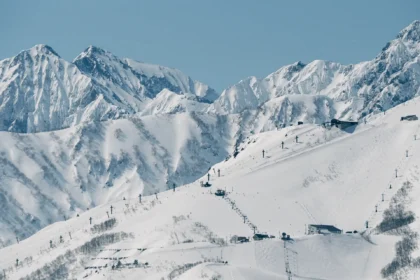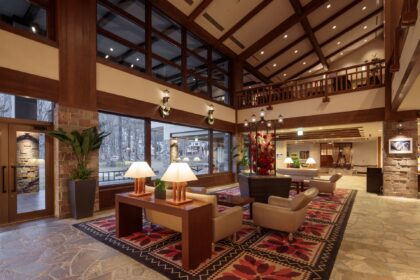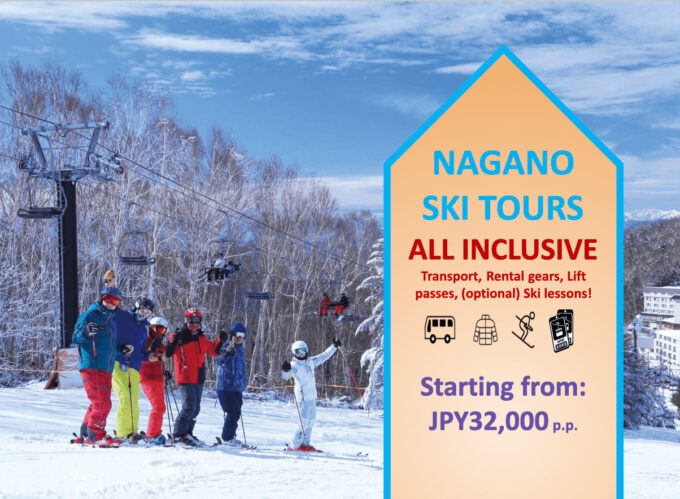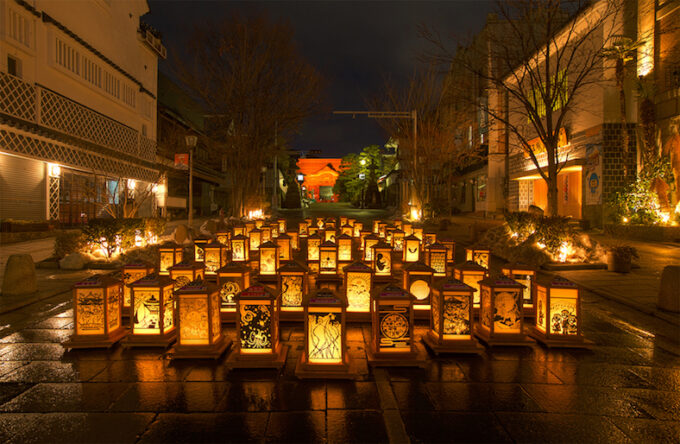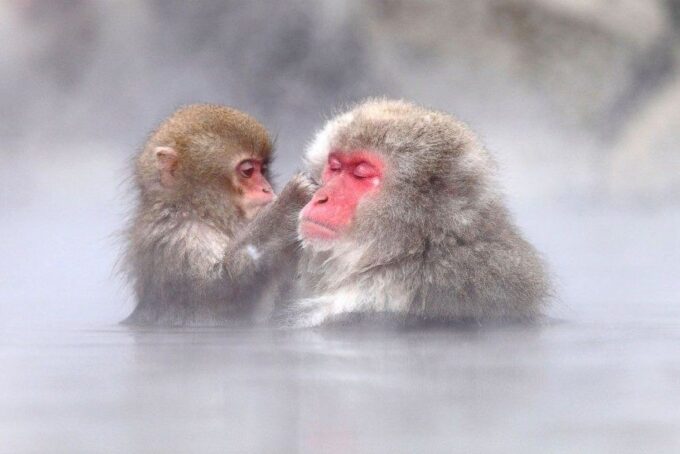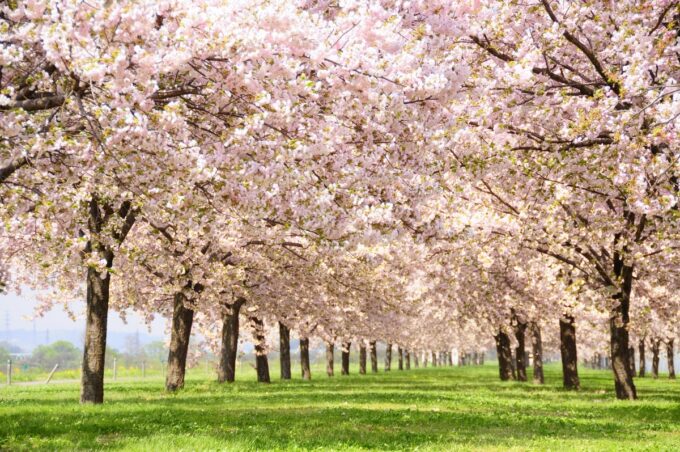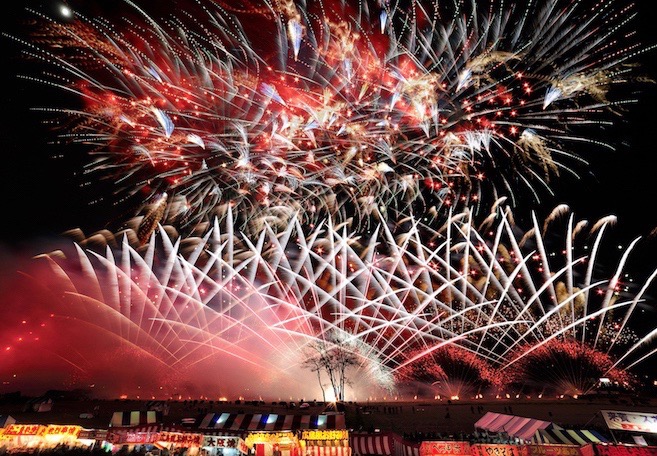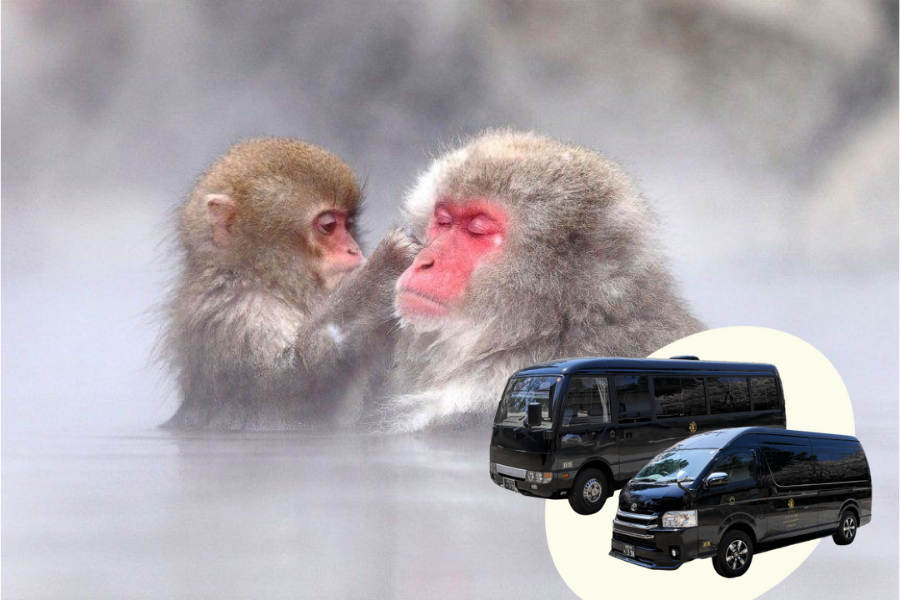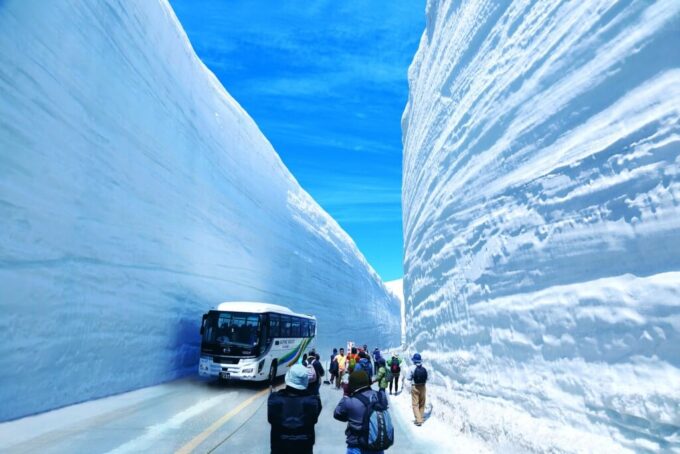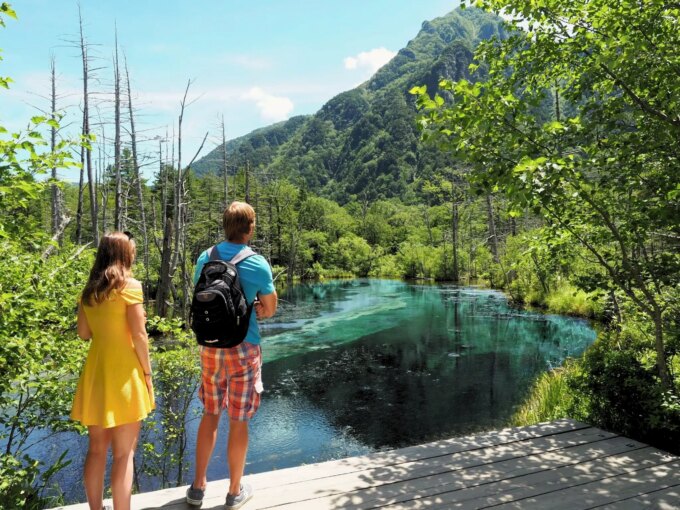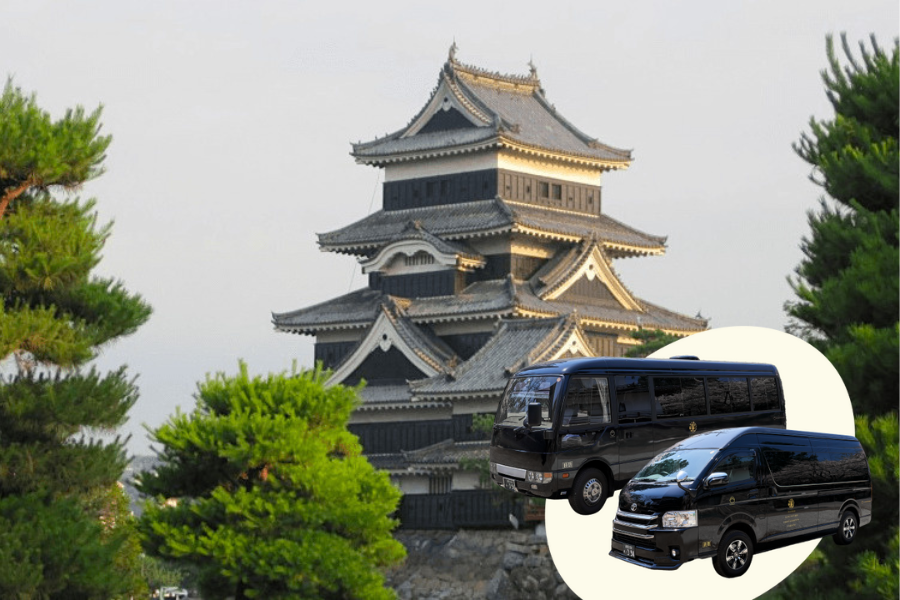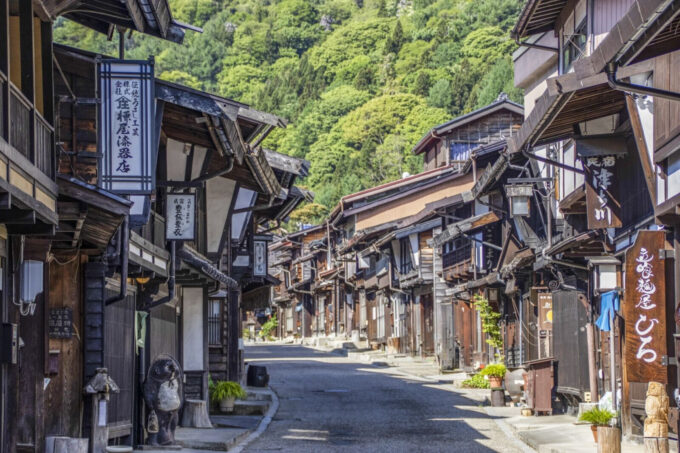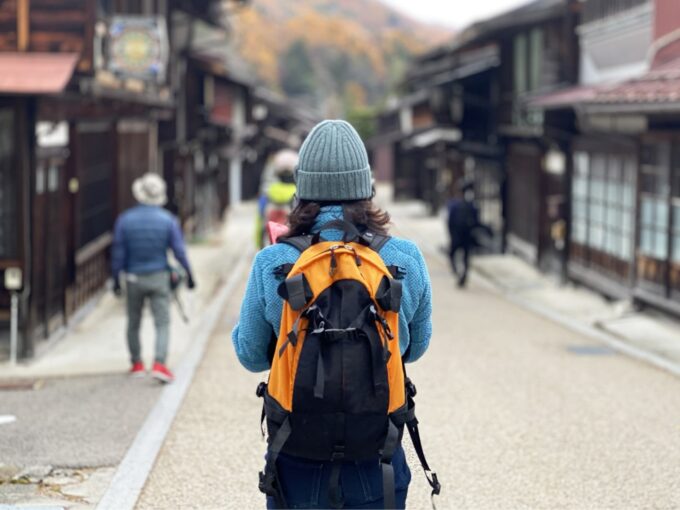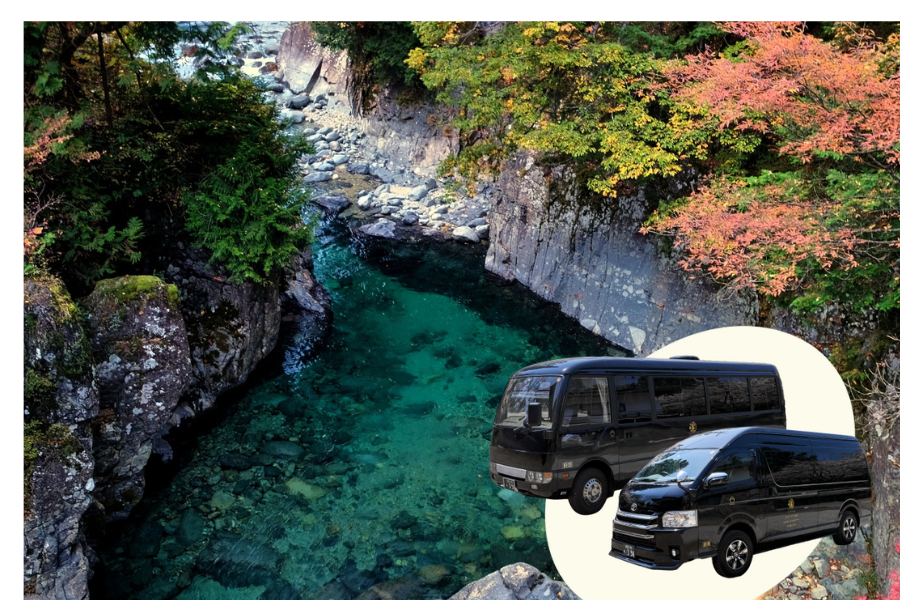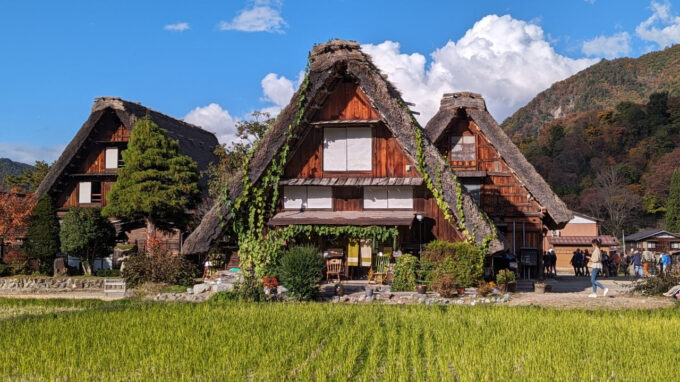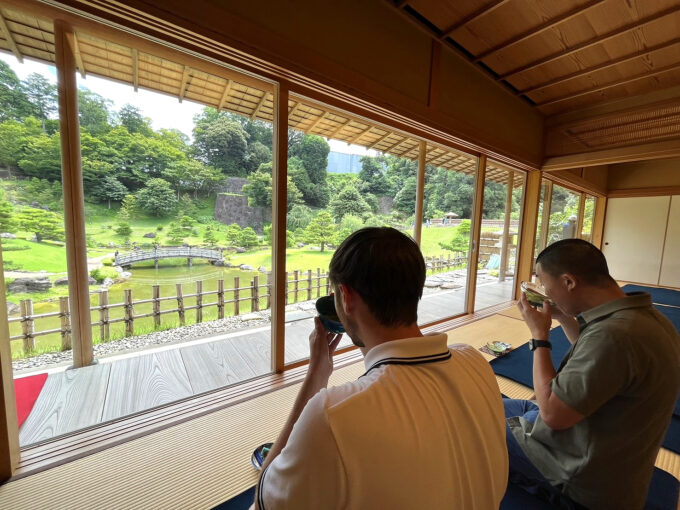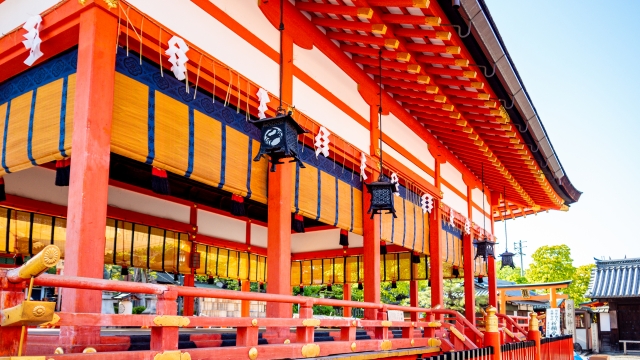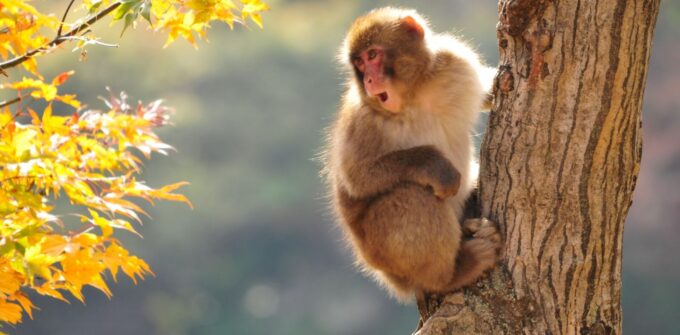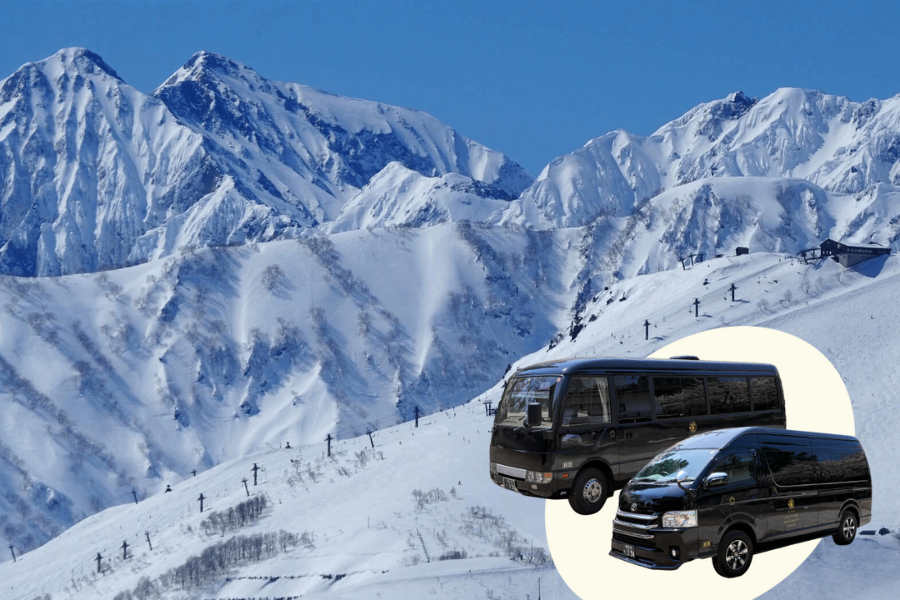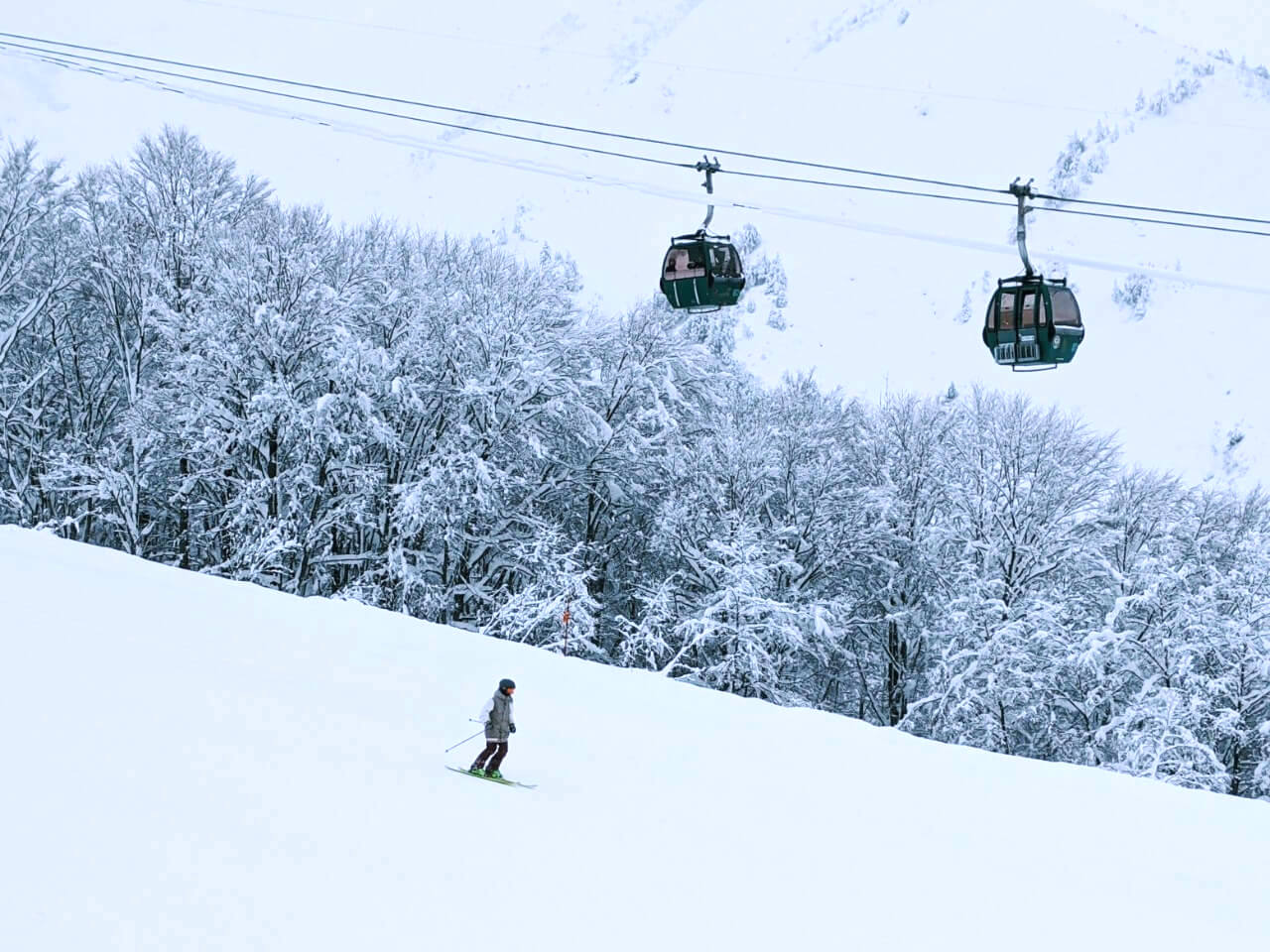
Around 1 hour from central Nagano City and approximately 280km to the northwest of Tokyo, Hakuba is one of Japan’s premier winter destinations. Collectively known as ‘Hakuba Valley’, ten ski resorts draw visitors from all over the world and from December to March offer some of Japan’s best skiing and snowboarding. On this page you will find the following information:
Offering the most accommodation options including an increasing amount of high-end and luxury hotels and private chalets along with restaurants, nightlife and shopping, Hakuba’s reputation is build-on what happens off-mountain as much as what is on offer on the slopes! Just as big in summer, the mountains of Hakuba offer some of Central Japan’s best ‘green season’ pursuits including hiking and mountaineering, trail-running, mountain-biking, canoeing, kayaking and more! Indeed, Hakuba’s reputation as a destination through spring, summer and autumn is starting to match that of its winter credentials. Good restaurants, high-end accommodation including ‘glamping’, hot air ballooning, brand store shopping and more continue to attract visitors throughout the year – a trend that is set to continue!
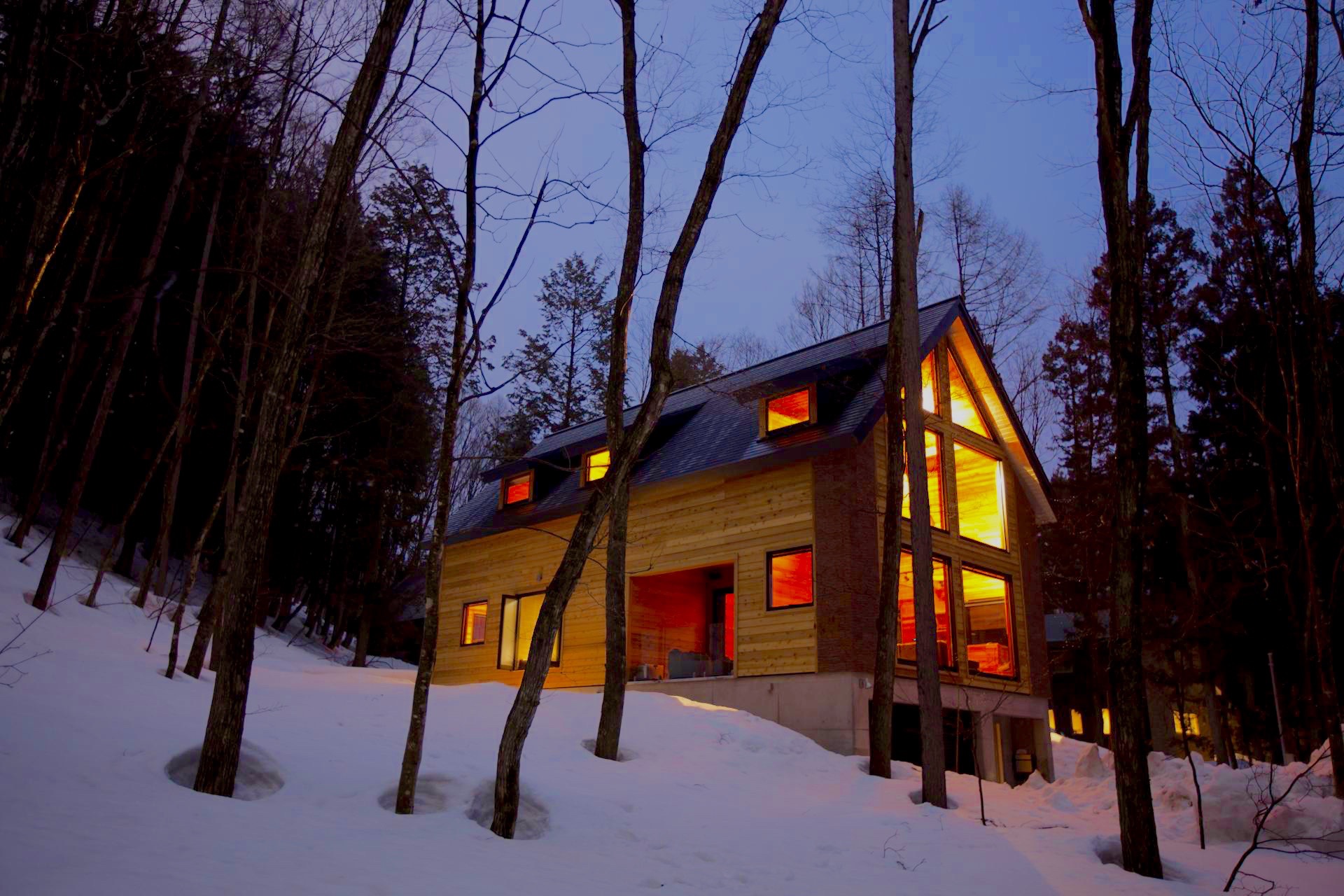
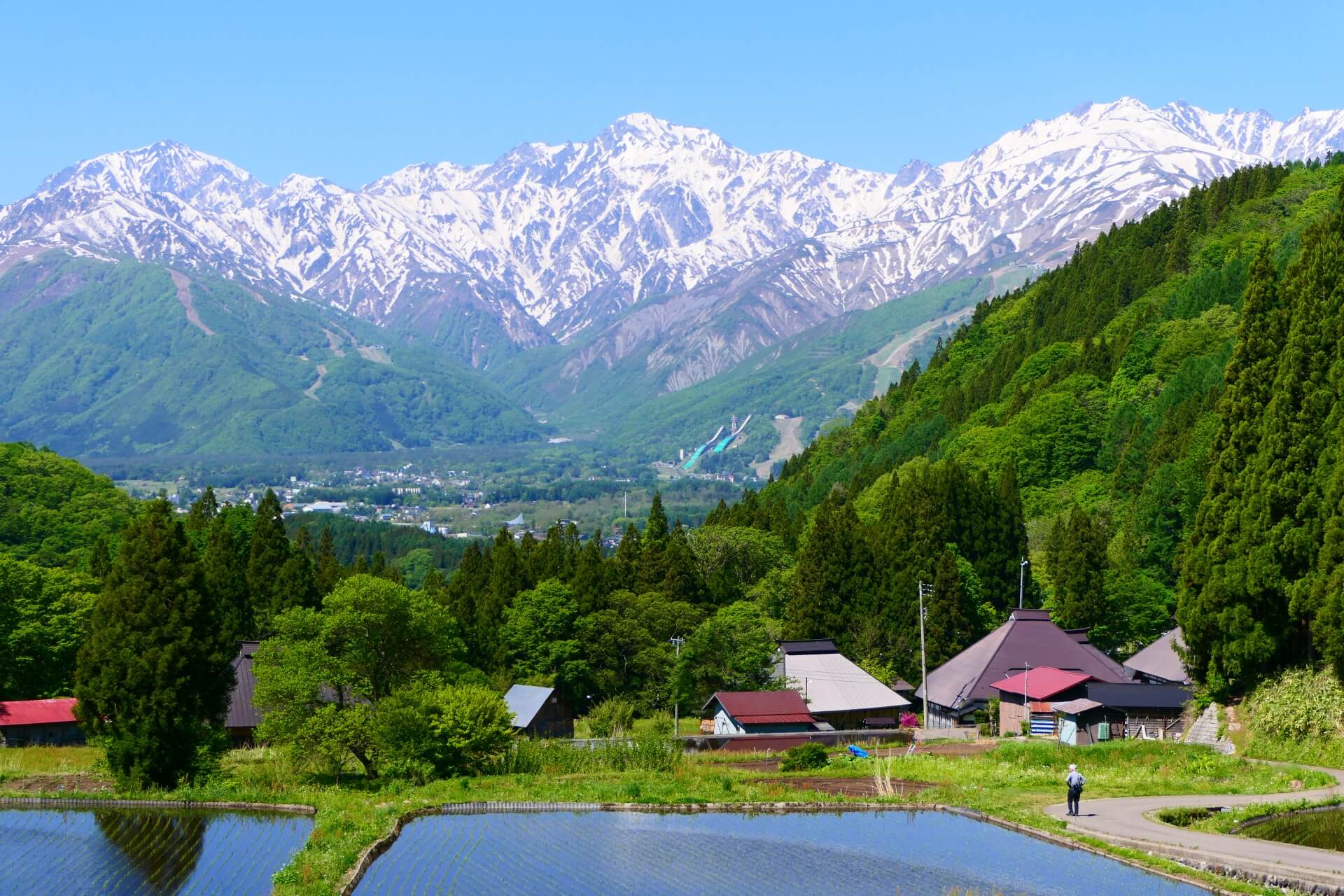
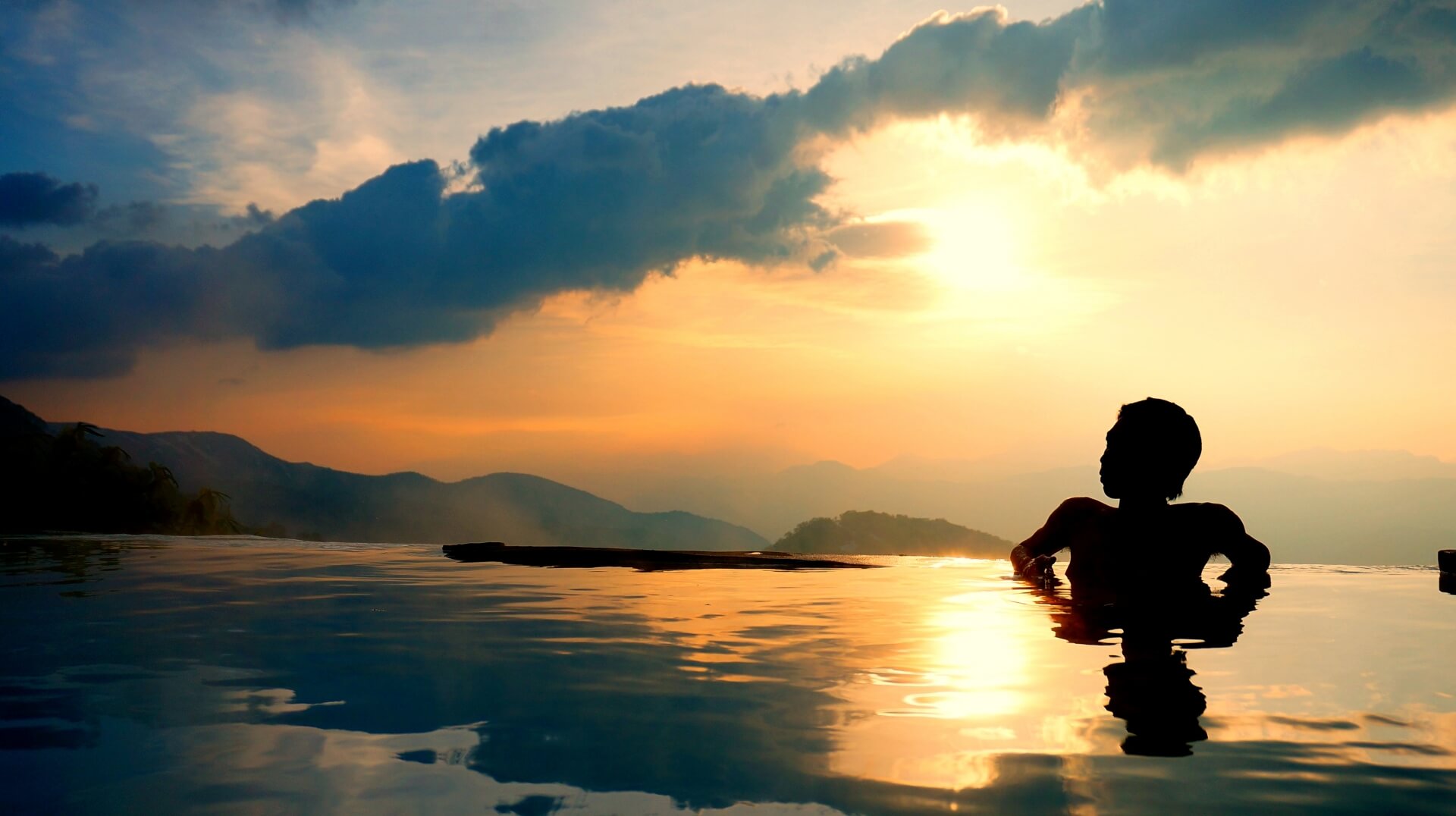
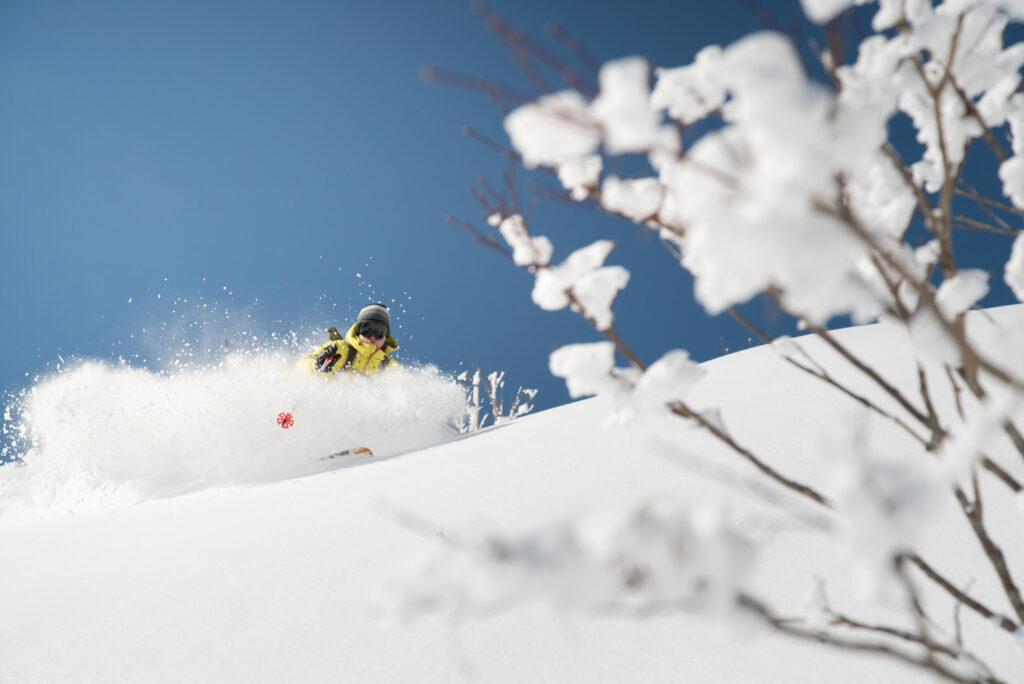

Based in Nagano and operating all year round, we are the region’s No.1 tour and charter operator. Our group tours run throughout the year, with pick-up and drop-off available for several tours in Hakuba during winter. We can also arrange private tours and charters to any destinations in the region, and as a registered travel agent, we can package transport, accommodation and more together so you save and get the most out of your time in Hakuba – scroll to the bottom for details.
Where is Hakuba?
Located in Nagano Prefecture, Hakuba lies 40KM (<1 hour drive) to the west of Nagano City / Nagano Station and 275KM (<4 hours drive) to the northwest of Tokyo. Often referred to as ‘Hakuba Valley’, the area runs north to south between the foothills of the Hida Mountains – often called the ‘North Alps’ – on its western border. The majority of Hakuba’s ski resorts are found on the western-side of the valley and attract visitors from all over the world each winter. Hakuba Valley claims to be the largest ski resort in Japan however it is important to note that collectively, the ten resorts in the area make-up the largest extent of terrain in the country however, only a couple of the resorts are connected meaning that you need to use a bus or drive between them. Most famous for its winters, Hakuba is increasingly establishing itself as an all-year-round destination and one of Japan’s best ‘green season’ sports regions. For visitors heading to Hakuba, the centrally-located Hakuba Happo Bus Terminal is always a convenient transport option with express services running to Nagano Station and beyond, while nearby Hakuba Station is on the scenic Oito Line running to and from Matsumoto Station. As such, getting to and from Hakuba is straightforward.
Best Things to Do in & Around Hakuba
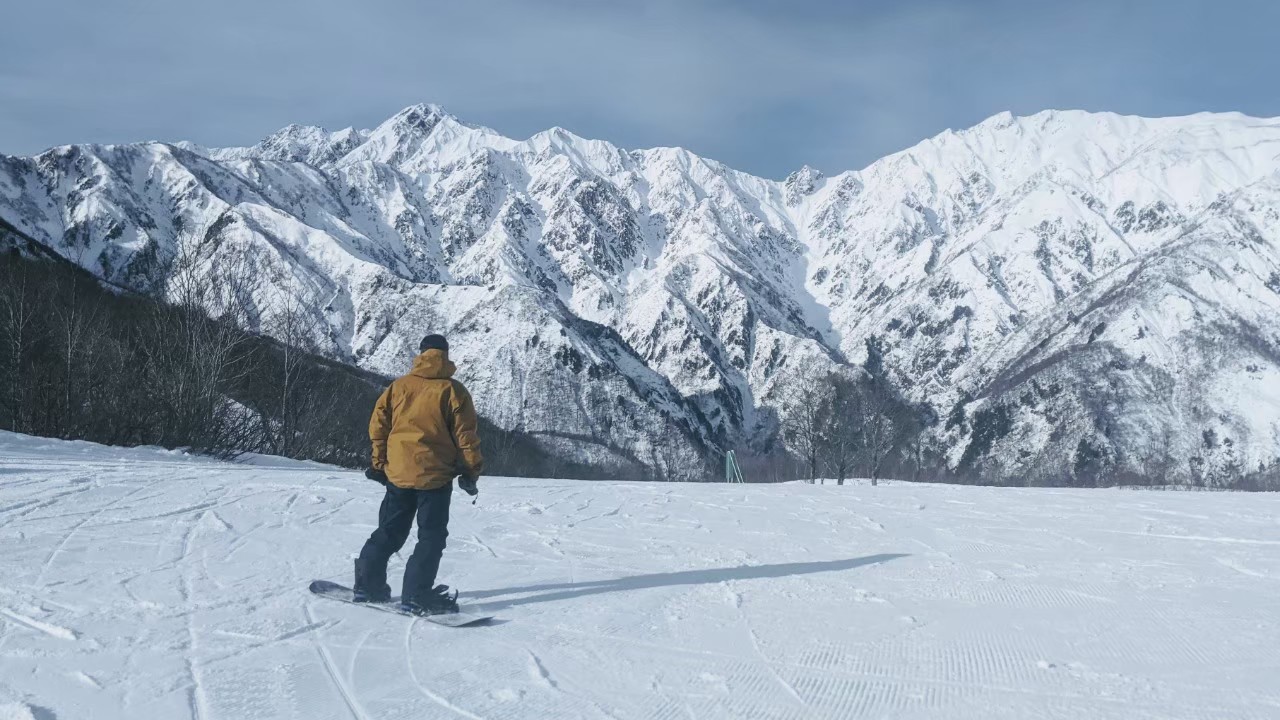
Most famous for the snow of winter, Hakuba is quickly establishing itself as an all-year-round destination with just as much to do in spring, summer and autumn as there is winter. From the adventure of hiking some of Japan’s tallest mountains, rafting, ballooning and more to the indulgence of great restaurants, hot springs and glamping, Hakuba has something for everyone... and oh yes, some of Japan's best ski resorts:
1 / HAKUBA VALLEY SKI RESORTS / December to April
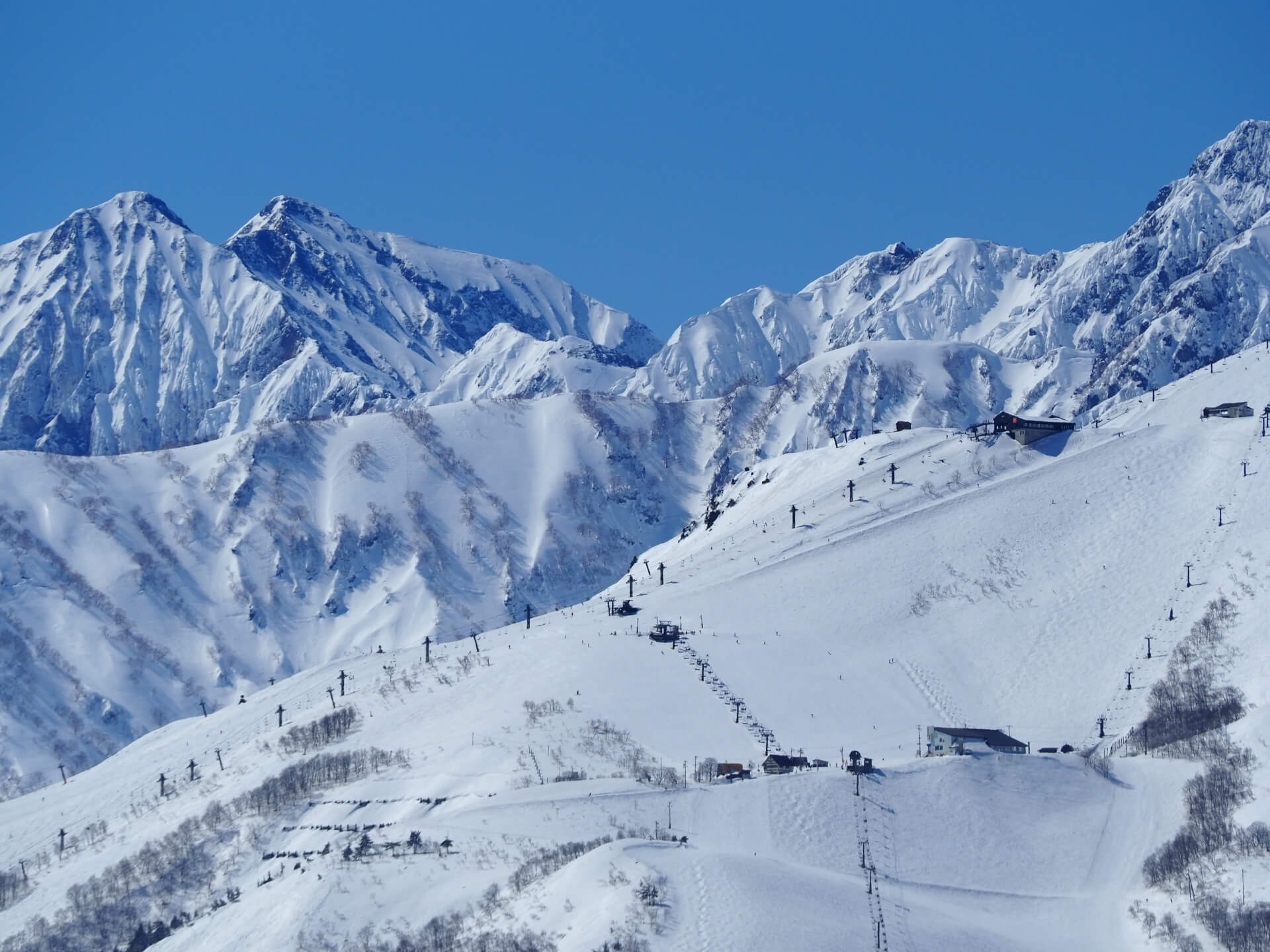
Located around one hour from central Nagano City, the ski resorts making-up the Hakuba Valley are considered some of the best in Japan. In total, ten resorts make the area collectively referred to as ‘Hakuba Valley’, offering skiers and snowboarders a vast amount of terrain and spectacular alpine views. Having hosted several events during the 1998 Winter Olympics, Hakuba Happo-One Snow Resort is the best known and largest of the lot. Within walking distance of the Hakuba Happo Bus Terminal, Happo One has a fantastic range of terrain including epic backcountry and somewhat uniquely among resorts in the region, takes skiers and snowboarders above the treeline.
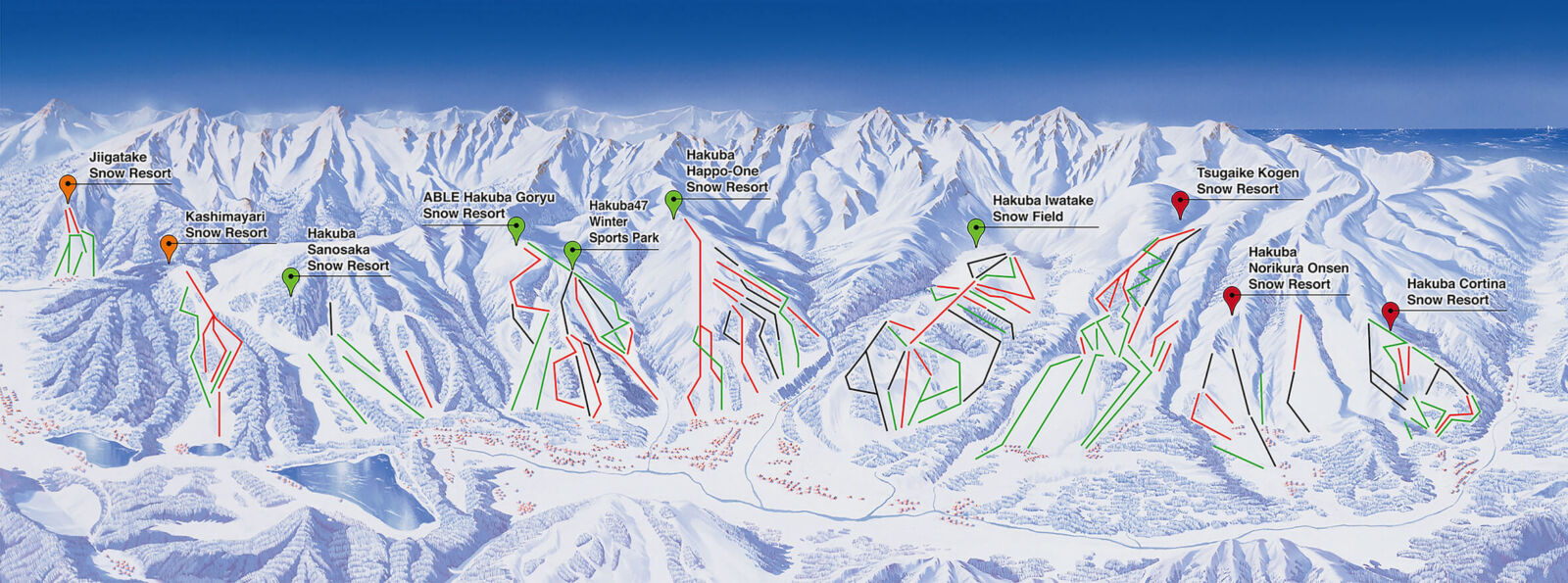
Nearby ABLE Hakuba Goryu Snow Resort and Hakuba47 Winter Sports Park are joined and can be enjoyed on an all-mountain pass. Rivalling Happo One in size and boasting Hakuba’s longest season, these resorts always popular with international visitors. These are only three of the many fantastic resorts of Hakuba! Spoiled for choice, visitors to the valley can take of the ‘Hakuba Valley Ticket’ – a common lift pass which covers all resorts and includes free use of the Hakuba Shuttle Bus. Information about the ticket can be through via the link above. For a listing of the most popular resorts in the valley including profiles and highlights, ski run info, ticketing, rental and ski school, and accommodation listings, see our ‘Hakuba Valley Ski Resorts’ page.
1-Day Ski Tour Package from Nagano Station
- Spots:
- Nagano
- Pick-up:
- Nagano City
- Drop-off:
- Nagano City
To visit Hakuba for a 1-Day skiing trip from Nagano Station, check out our tour page above! Including transport to the resort of your choice, lift passes, rental gear, and even optional lessons, this is the perfect way to try out skiing on Japanese powder without having to pay for expensive accommodation. By using the Shinkansen, you can even make it as a day trip from Tokyo if you catch the first train towards Nagano in the morning.
2 / DISCOVER THE OLYMPIC SPIRIT / December to April
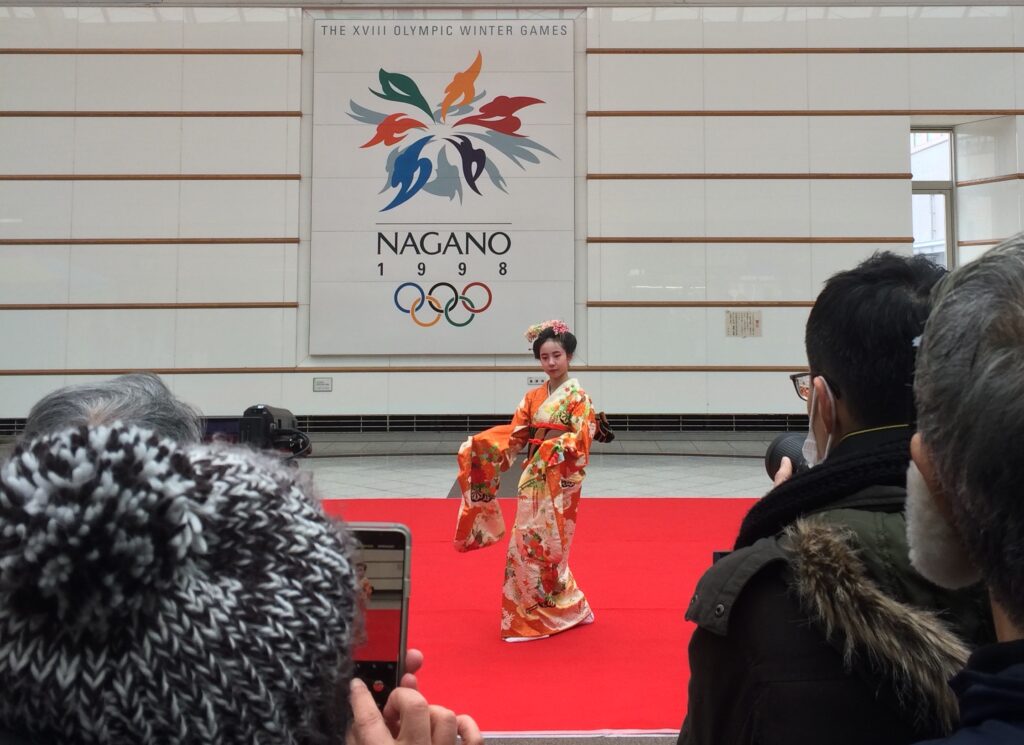
As the proud host of the 1998 Winter Olympics, Nagano’s Olympic heritage is alive and well in the resorts of Hakuba. Considered the main venue – outside of the stadiums and arenas of Nagano City – Hakuba Happo One hosted events including downhill and giant slalom, while ski jumping events took place at a nearby arena. To this day, almost all venues remain in operation with former Olympic ski runs marked-out at host resorts. Challenging yourself on these runs while in Hakuba – or at any of the other host venues including Shiga Kogen is a great way to discover and live the spirit of 1998!
3 / ENJOY BACKCOUNTRY SKIING / December to April
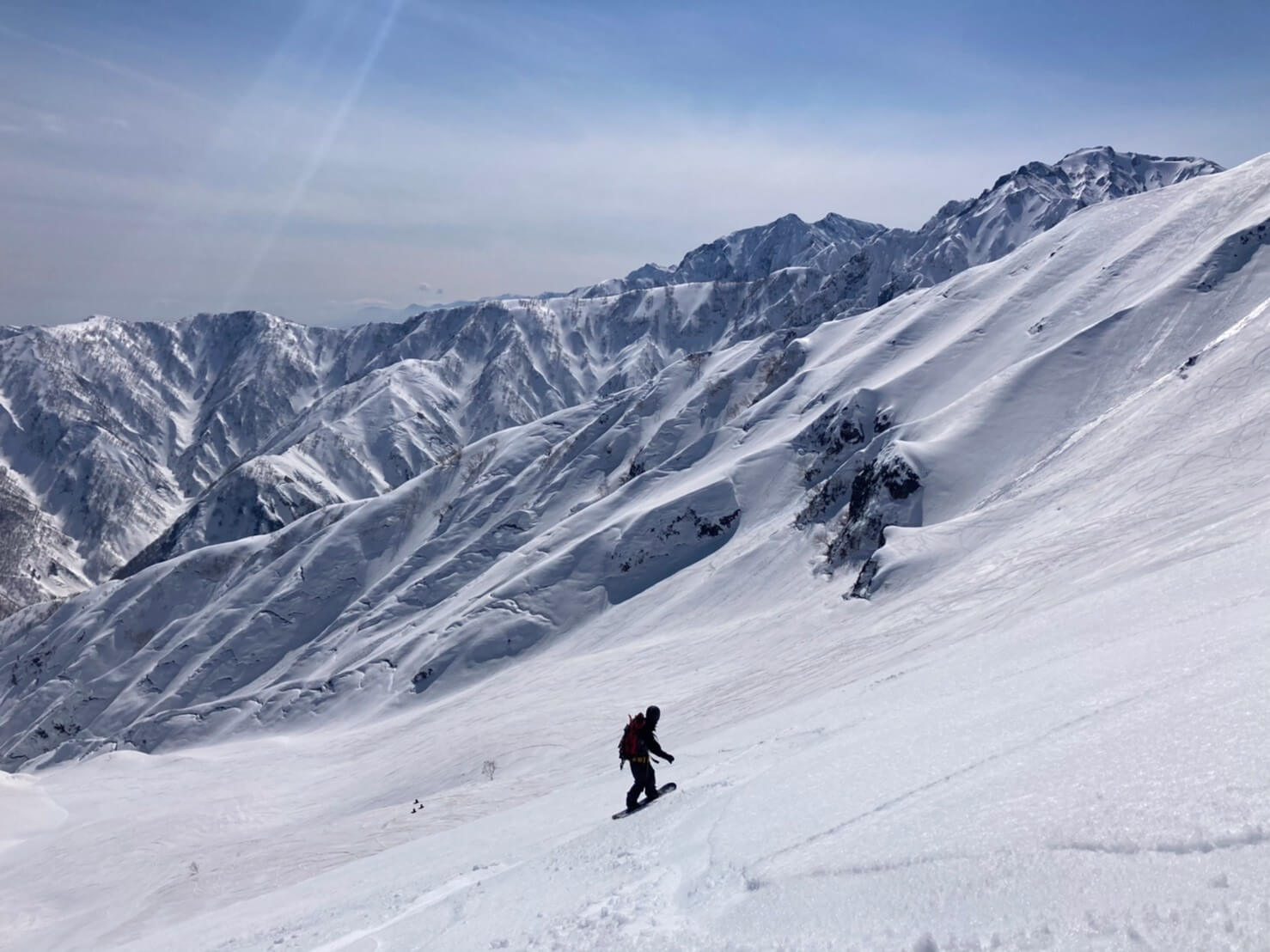
Ascending into the mountains of the North Alps, the resorts of Hakuba are blessed with some of Japan’s best terrain and alpine vistas. This begs the question, what about backcountry in Hakuba? If you’ve visited resorts in Japan you will know that backcountry is usually strictly controlled and often banned. While this can be frustrating, rules are in place for the safety of visitors. The huge snowfall that many resorts are blessed with can also be extremely dangerous, and getting into real trouble when off-piste is an ever-present possibility. For that reason, we recommend organizing an experienced local guide or backcountry tour when in Hakuba. Resorts including Hakuba Happo One, Hakuba Goryu and Hakuba 47 all have fantastic backcountry but usually require skiers and snowboarders to register and sit through safety information sessions before heading-out. Hakuba Tsugaike and the joined resorts of Hakuba Cortina and Hakuba Norikura also offer excellent country and steep terrain. For further information, see our ‘Hakuba Valley Ski Resorts’ page and remember, your personal safety should always be your first priority.
4 / JIGOKUDANI MONKEY PARK / all year round
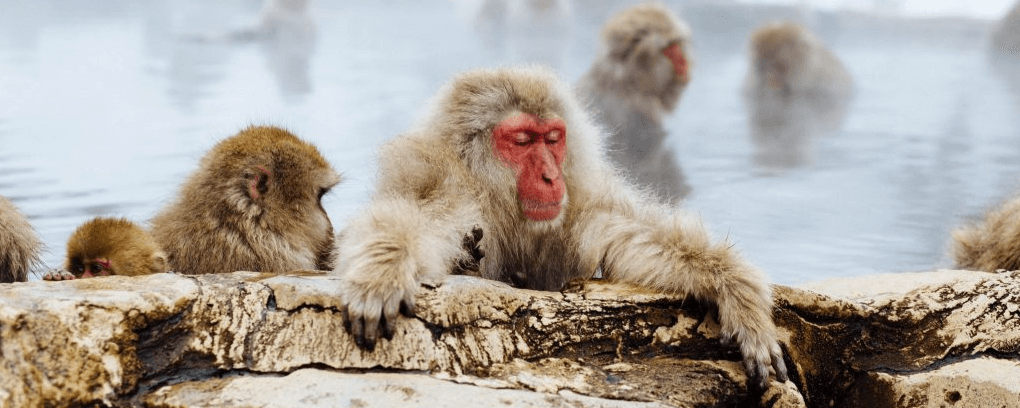
The famous hot spring-bathing monkeys of the Jigokudani Monkey Park rival Hakuba as one of Central Japan’s most popular destinations in winter. The monkeys actually come to the park all year round but it is their hot spring-loving antics of winter and ability to thrive in the snow which makes the park such an enjoyable experience from December to March. Located in the the Yamanouchi area, the monkey park is located around 2-hours from Hakuba, in the foothills of Joshinetsu Kogen National Park. Nestled within those mountains, Shiga Kogen is Japan’s largest and highest ski resort while in the valley below, the hot spring towns of Kanbayashi Onsen, Yudanaka Onsen and Shibu Onsen provide plenty of accommodation options nearby the monkeys.
For information on taking a tour at the park, please see our 'Join a Tour from Hakuba' section below!
5 / RESTAURANTS & NIGHTLIFE / all year round
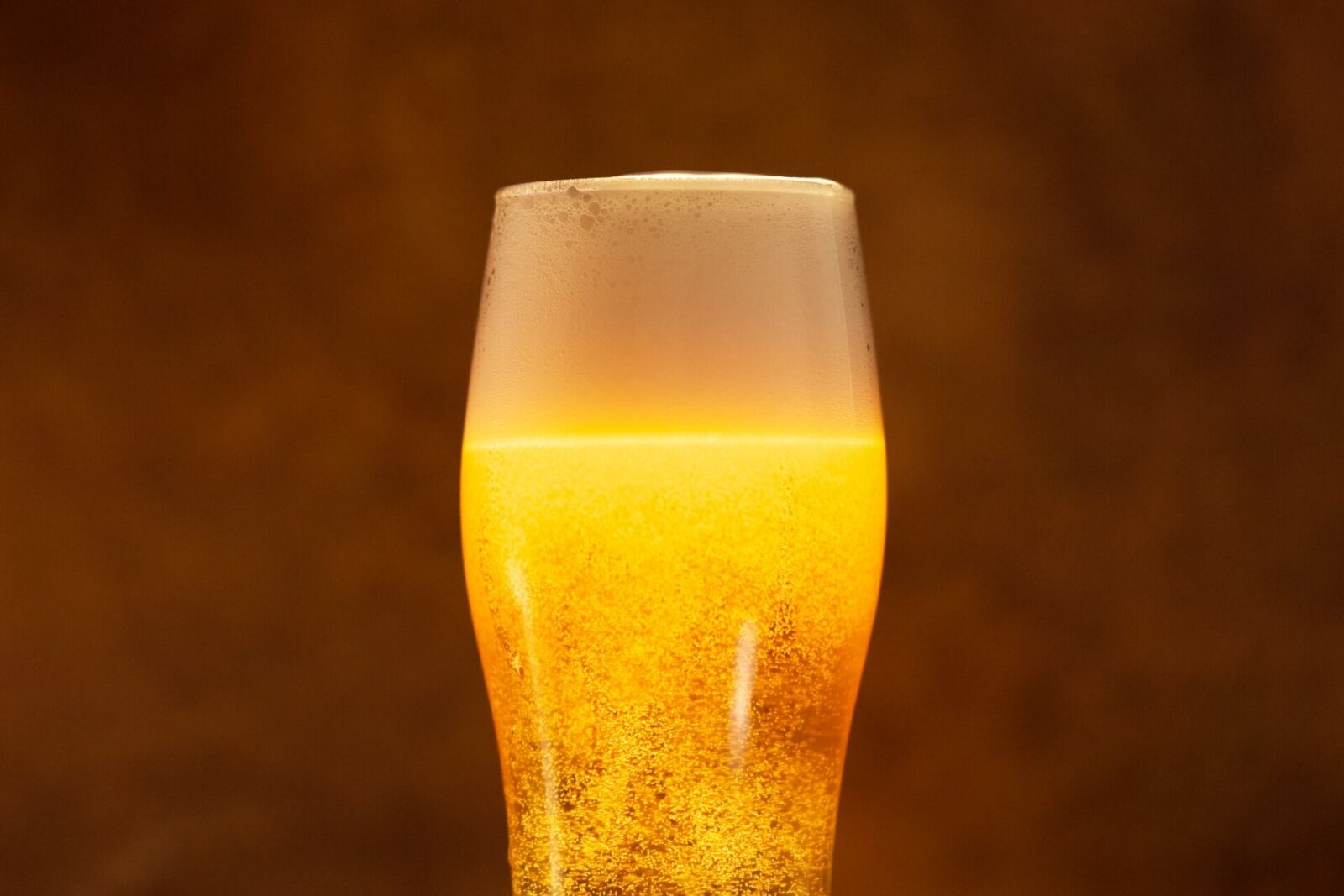
Along with the great skiing and snowboarding on offer in Hakuba Valley, one of the main reasons for its popularity with international visitors is that it offers the best range of accommodation, restaurants and nightlife of the ski resort areas in Central Japan. Areas including Hakuba Village, Wadano and Echoland all have a large number of cafes, restaurants and bars catering to all tastes and budgets, with more and more fine-dining options popping-up all the time. If nightlife and range of dining options is important to you, we recommend staying in the central area of Hakuba Village.
6 / SHOPPING AND CAFES / all year round
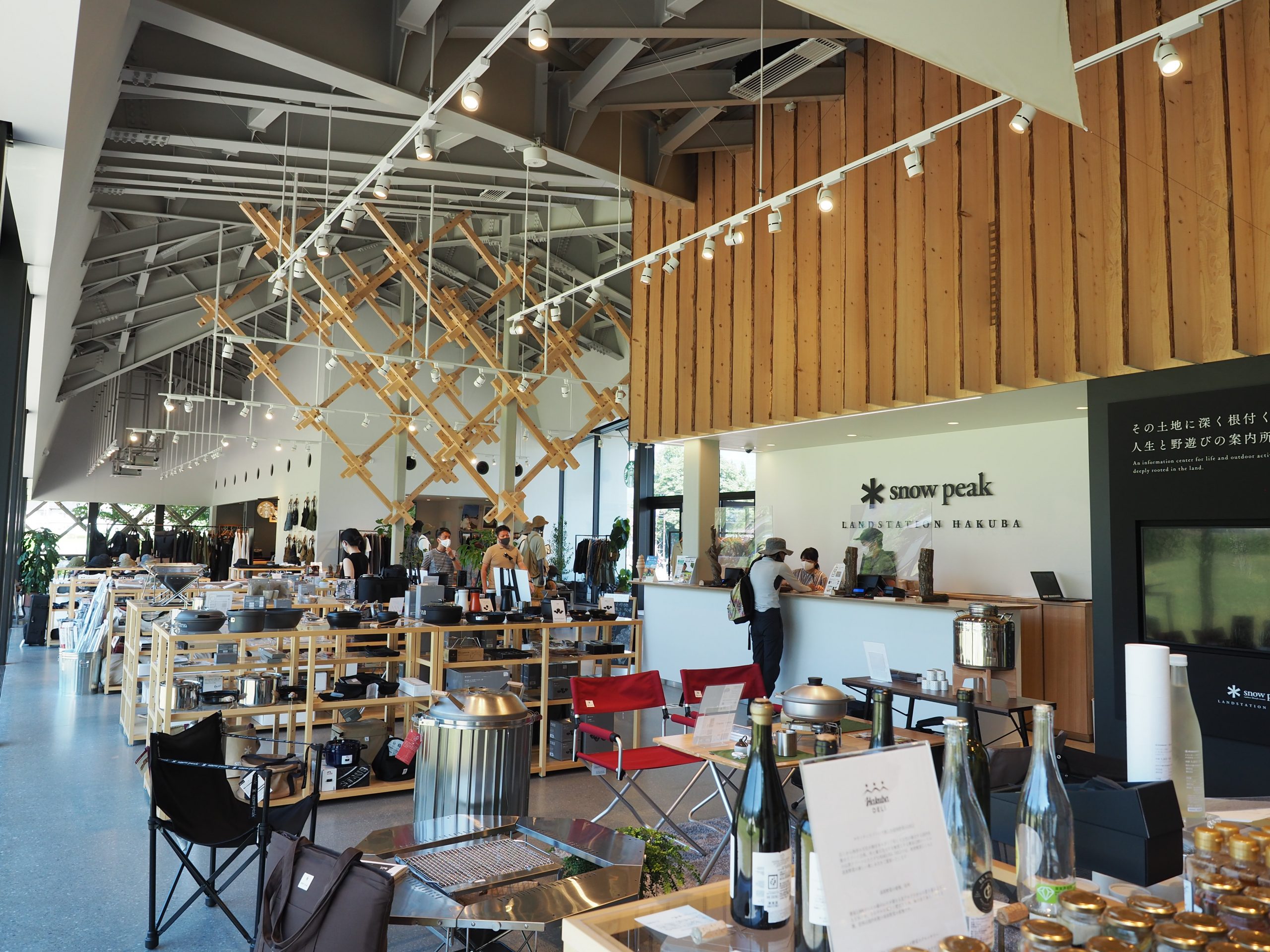
As popular with Japanese as it is with international visitors, an increasing number of hotels, restaurants and shops are opening, catering to the higher end of the market. For many visitors, this is the ongoing and growing appeal of Hakuba.Located in central Hakuba – at the midpoint between Hakuba Station and the Hakuba Happo Bus Terminal – Snow Peak Land Station is a combined flagship store, accommodation, restaurant and café, and open-area event space. Designed by renowned architect Kengo Kuma, it has quickly established itself as one of Hakuba’s most popular all-year-round destinations. Snow Peak have also opened their ‘Field Suite Hakuba’ in the ski fields of Hakuba Happo One. Set against a spectacular alpine landscape, this ‘glamping’-style accommodation is the first of its kind in Hakuba and sure to be popular.
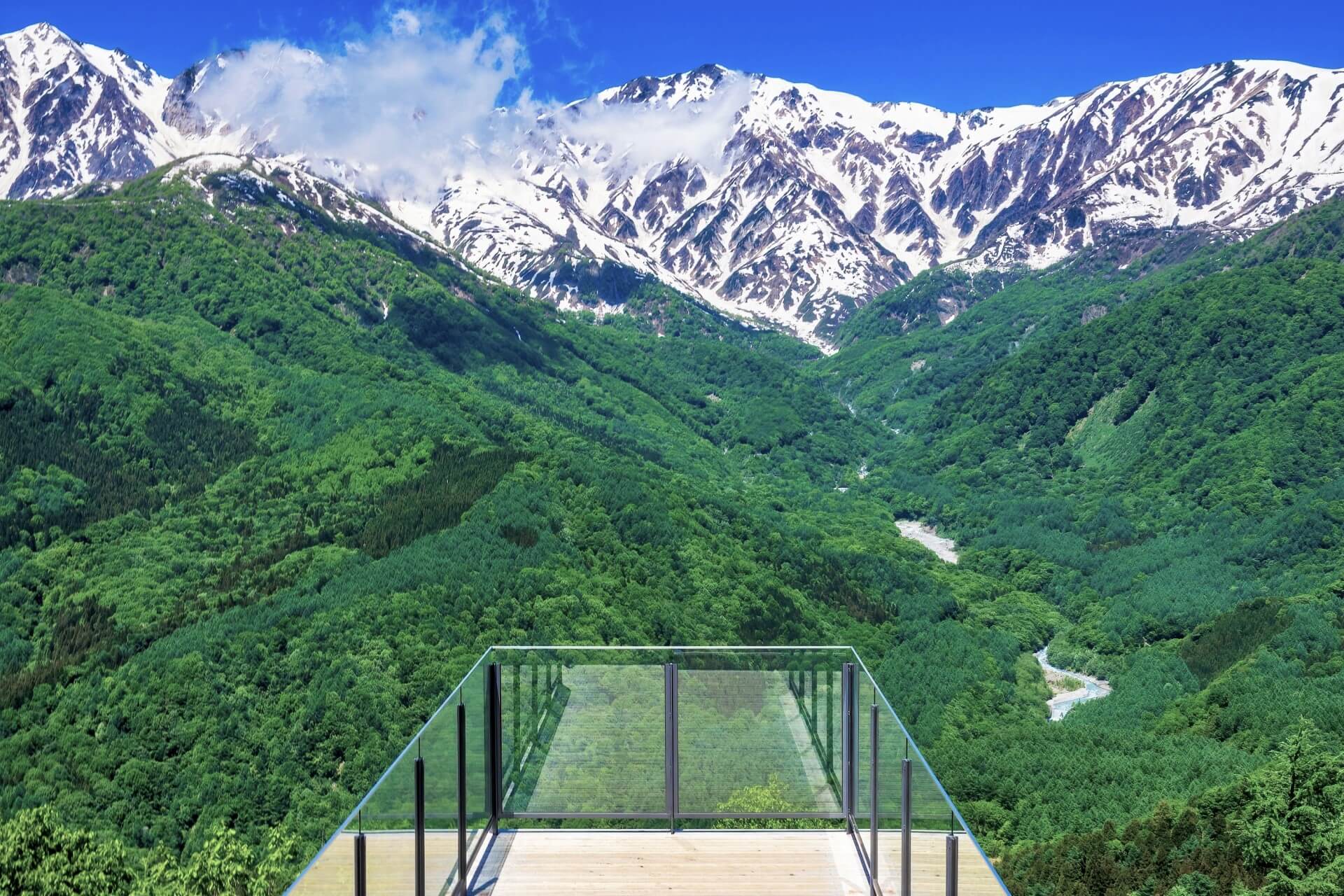
Hakuba Mountain Harbor is located at Iwatake Snow Field and accessible for most of the year using the ‘Noah’ Gondola from the resort base. An observation deck allows for stunning views of the North Alps while visitors can also enjoy food and drinks for the adjoining City Bakery. It remains open through winter, a welcome addition to what is often regarded as Hakuba’s most beautiful resort, Iwatake. With more high-end venues set to open, watch this space for updates!
7 / FIND THE HOTEL OF YOUR DREAMS / all year round
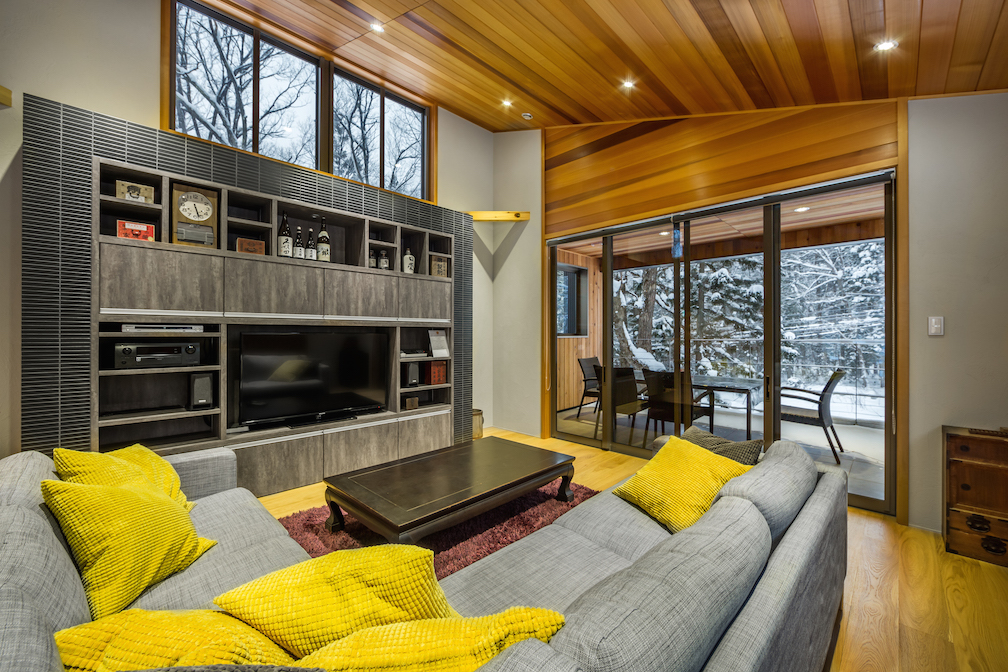
Hakuba offers a huge range of accommodation including plenty of high-end options and self-contained chalets. As the most central resort in Hakuba Valley, the area around the base of Happo One also offers the largest range of accommodation, restaurants, bars, shops and other services. In terms of accommodation, Hakuba Village – including Wadano and Echoland – are all popular choices with plenty of nightlife and dining options. Accommodation ranges from large hotels to small, family-run lodges and private chalets. You’ll find everything from luxury accommodation to budget/backpackers with prices to match. Always popular, accommodation on weekends and holidays can book-out well in advance so make sure to plan ahead to avoid disappointment. For more information, see our 'Where to Stay in Hakuba?' page.
8 / ONSEN IN & AROUND NAGANO / all year round
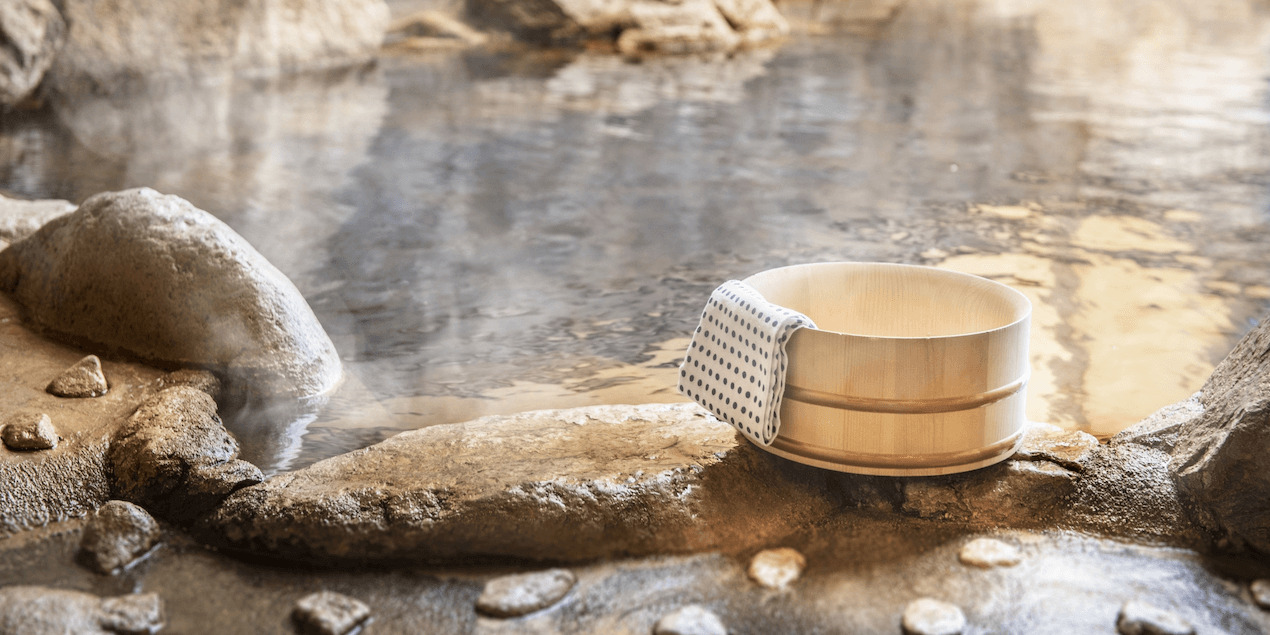
One of the most enjoyable aspects of any visit to Japan is relaxing in a ‘onsen’ (natural hot spring). For visitors heading to Hakuba in winter, soaking in an onsen at the end of a long day on the mountain is one of the highlights of skiing and snowboarding here. Several hotels in Hakuba have their own in-house hot springs while there are also multiple public onsen dotted through the valley, including Hakuba Happo Onsen, directly across from the Hakuba Happo Bus Terminal. Open daily from 06:00 to 21:00, heading in for an onsen at the end of the day is the ultimate reward. When booking your accommodation, make sure to look for those with their own hot springs or at least, a public onsen nearby.
9 / ENJOY NAGANO'S MANY GREAT SKI RESORTS! / November to May
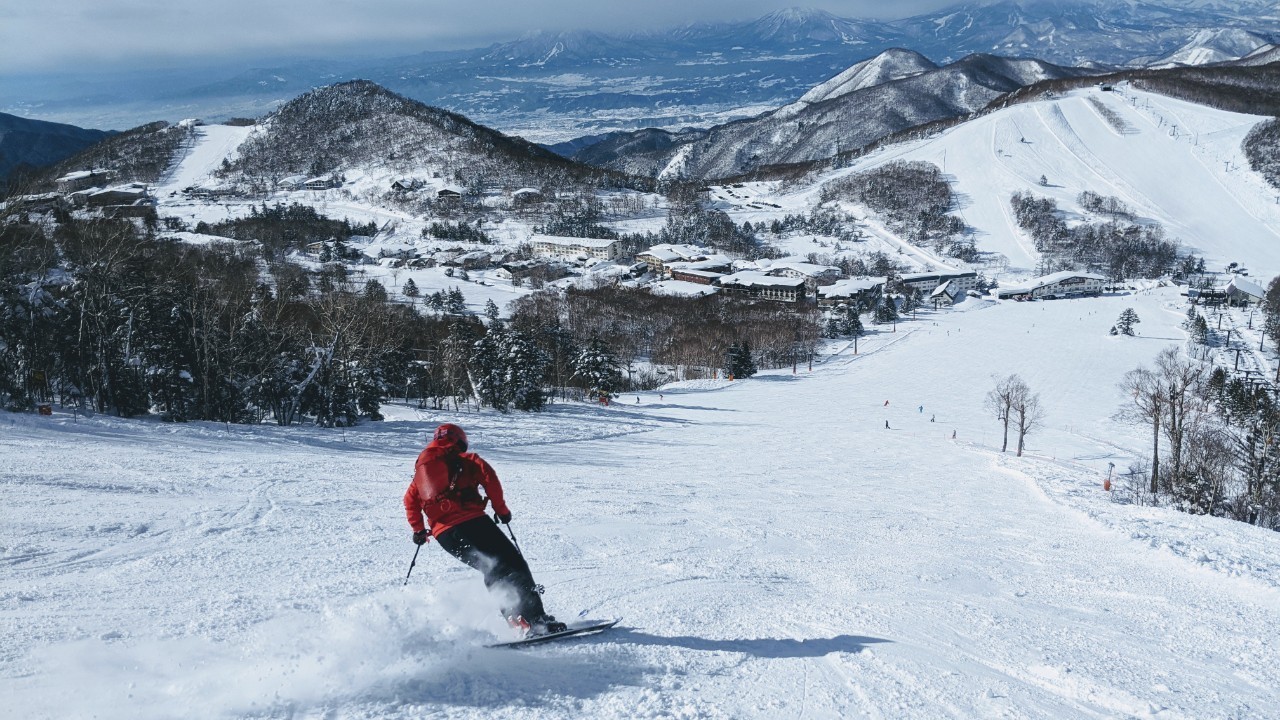
The Nagano Winter Olympics were the first to include snowboarding as a medaled sport, with all snowboarding events taking place in Shiga Kogen – Japan’s largest and highest ski resort. Located around 2-hours from Hakuba and boasting Nagano’s longest season and most reliable snow conditions, Shiga Kogen doesn’t enjoy the profile of Hakuba Valley but it is quickly coming to the attention of international visitors. Offering over 600 hectares of interconnected terrain, Shiga is cover by a common all-mountain pass. Given the size of the resort, there is terrain and courses suited to all levels including courses used during the ’98 Olympics.
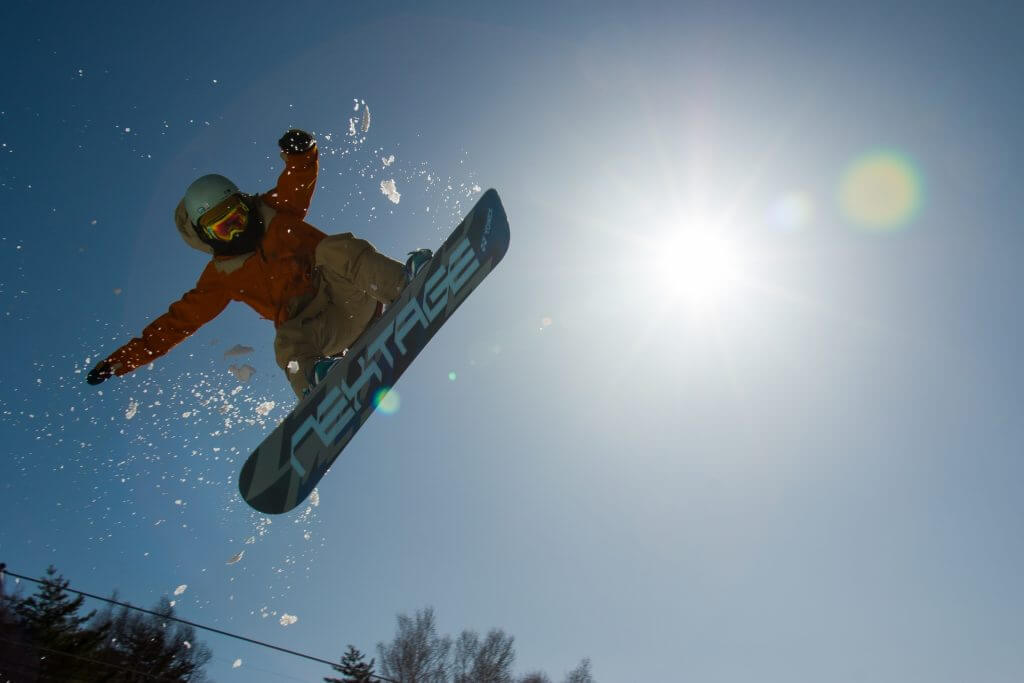
Less than an hours drive from Shiga, Nozawa Onsen is one of Nagano’s most popular resorts - offering skiers and boarders around 300 hectares of train between 565 and 1650 metres. Also known for its great powder and setup for snowboarders, Nozawa is a lively resort serviced by a large village full of accommodation, restaurants and bars and ‘onsen’ (hot springs), Nozawa’s reputation is as much based on what happens off the mountain. Across the valley from Nozawa, Madarao Mountain Resort is known for its epic powder and awesome tree runs. For limited and no backcountry, Madarao is one resort that actually encourages you to get off-piste and head into the trees!
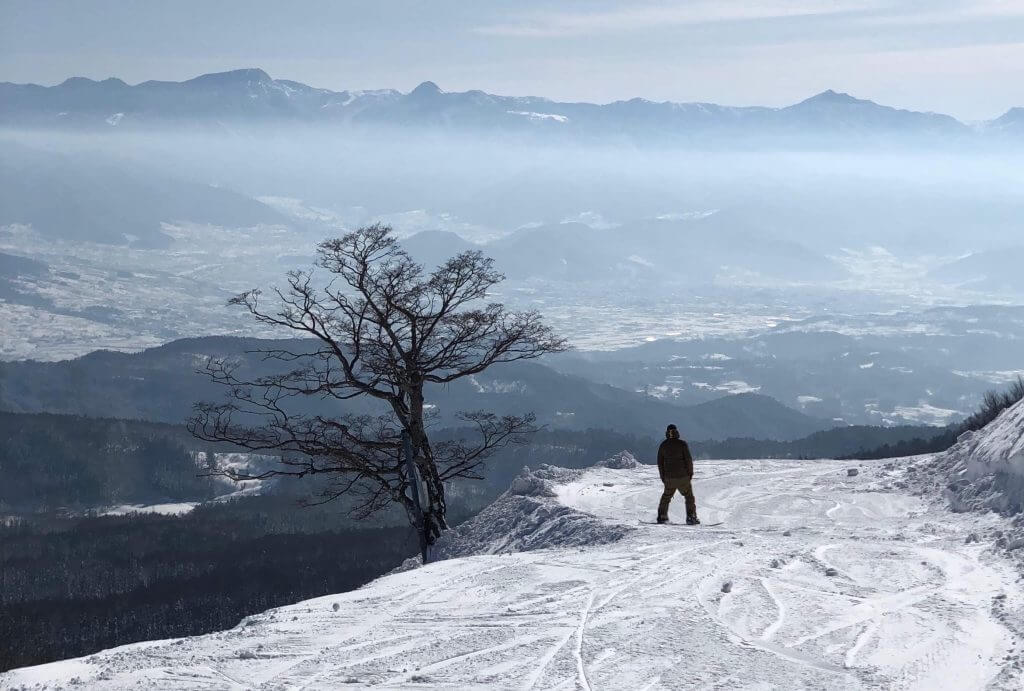
Only 30-minutes drive over the backside of Madarao, Myoko Kogen is quickly coming to the attention of international visitors who have discovered its epic powder. Located in the southern end of Niigata Prefecture and nearby the coast, Myoko receives a massive amount of snow each year. The resorts making-up the area collectively known as ‘Myoko Kogen’ are less developed than resorts such as Nozawa Onsen and have pretty liberal policies when it comes to backcountry, making Myoko the up-and-coming destination for international powderhounds.
1-Day Ski Tour Package from Nagano Station
- Spots:
- Nagano
- Pick-up:
- Nagano City
- Drop-off:
- Nagano City
By joining this tour, you can visit any of the above mentioned Nagano ski resorts! Transport, rental gear, and lift passes will all be covered by us - and if you request, we can even add on lessons. Perfect for those who are short on time or want to try their hand at skiing without having to book costly hotel rooms at the resorts, this tour should be booked early to make sure you can get a booking.
10 / JOIN THE WINTER FESTIVALS OF NAGANO / February
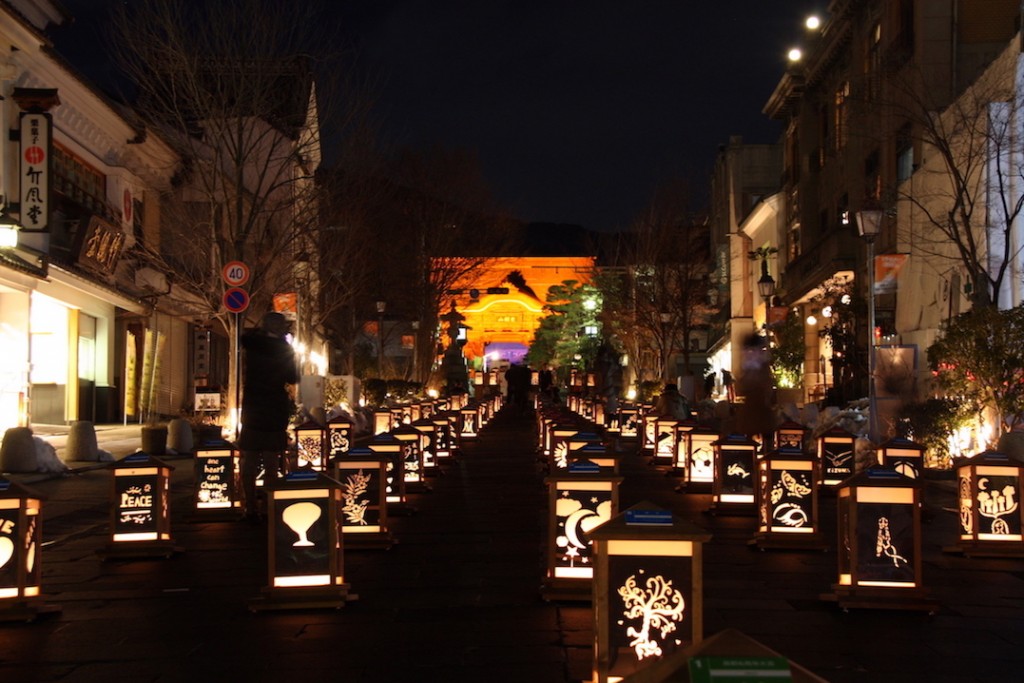
In the first week of February, the ‘Tomyo Lantern Festival’ sees Nagano City’s historic temple come to light, as light installations and projects offer thanks to the Buddha – an important act in Buddhism – while also commemorating Nagano’s role as host to the 1998 Winter Olympics. With light installations in place in the ‘shukubo’ (temple lodgings) in the surrounding streets and hundreds of ‘kiri-e’ (cut paper lanterns) leading up to the temple, this is a subdued but beautiful festival in the heart of the city.
1-Day Tour: Snow Monkeys & Zenkoji Tomyo Lantern Festival
- Spots:
- NaganoSnow MonkeyHakuba
- Pick-up:
- Nagano CityHakuba
- Drop-off:
- Nagano CityHakuba
To see the Tomyo Festival for yourself, take part in our above 1-day guided tour which also includes a visit to the Snow Monkey Park, Japanese-style lunch, and guided tour of Zenko-ji temple, making it the perfect option for your day off of skiing. This tour also offers convenient direct pick-up from Hakuba!
11 / JOIN A TOUR FROM HAKUBA / December to March
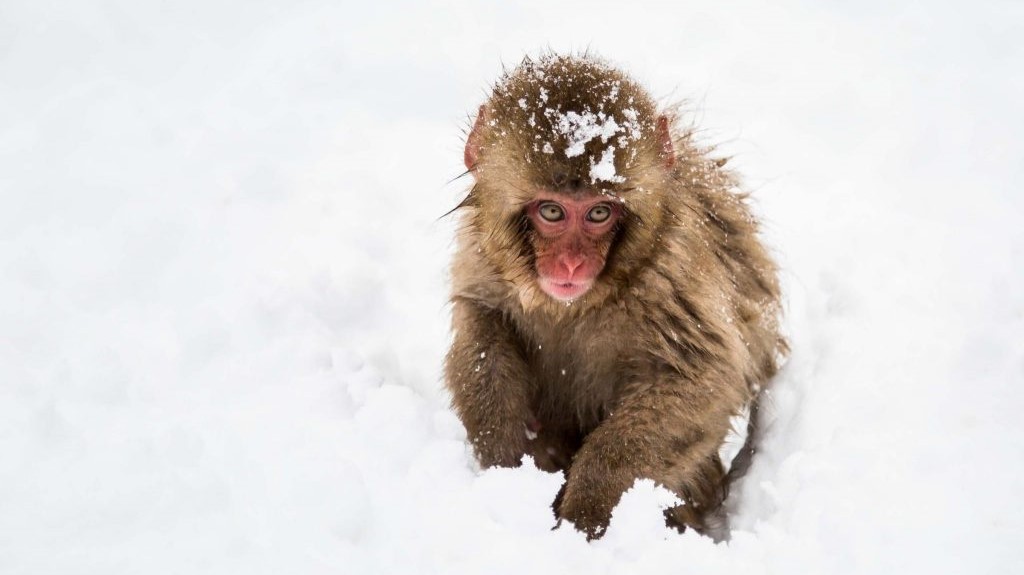
Best Selling
1-Day Tour: Snow Monkeys, Zenkoji Temple & Sake in Nagano
- Spots:
- NaganoSnow MonkeyHakuba
- Pick-up:
- Nagano CityHakuba
- Drop-off:
- Nagano CityHakuba
If you are looking to take a break from skiing or hiking for a day, joining one of our tours is a great way to enjoy another side of Nagano in winter. With pick up from Hakuba available every day of the winter ski season (December - March), our “1-Day Tour: Snow Monkeys, Zenko-ji Temple & Sake in Nagano” will bring you first to Nagano City’s biggest cultural treasure, the 1,500 year old Zenkoji Temple, along with a guided sake tasting. Next you will head to the famous Snow Monkey Park, but not before enjoying a tasty Japanese lunch! Once in the park, you will have ample time to enjoy the sight of the monkeys relaxing in their favorite hot spring before heading back. You are free to choose drop off at either Hakuba, where you started, or Nagano Station. By getting dropped off at Nagano Station, you can stay the night and take part the next day in any of a number of tours which depart from Nagano! You can of course bring your luggage on the bus, so taking the tour on the last day of your stay before taking the bullet train from Nagano is a great way to simplify transport during your trip. For some examples of how to best combine our tours to make your own multi-day trip, please see this section.
12 / CHERRY BLOSSOMS & AUTUMN LEAVES IN NAGANO / late-March to late-April & October to November
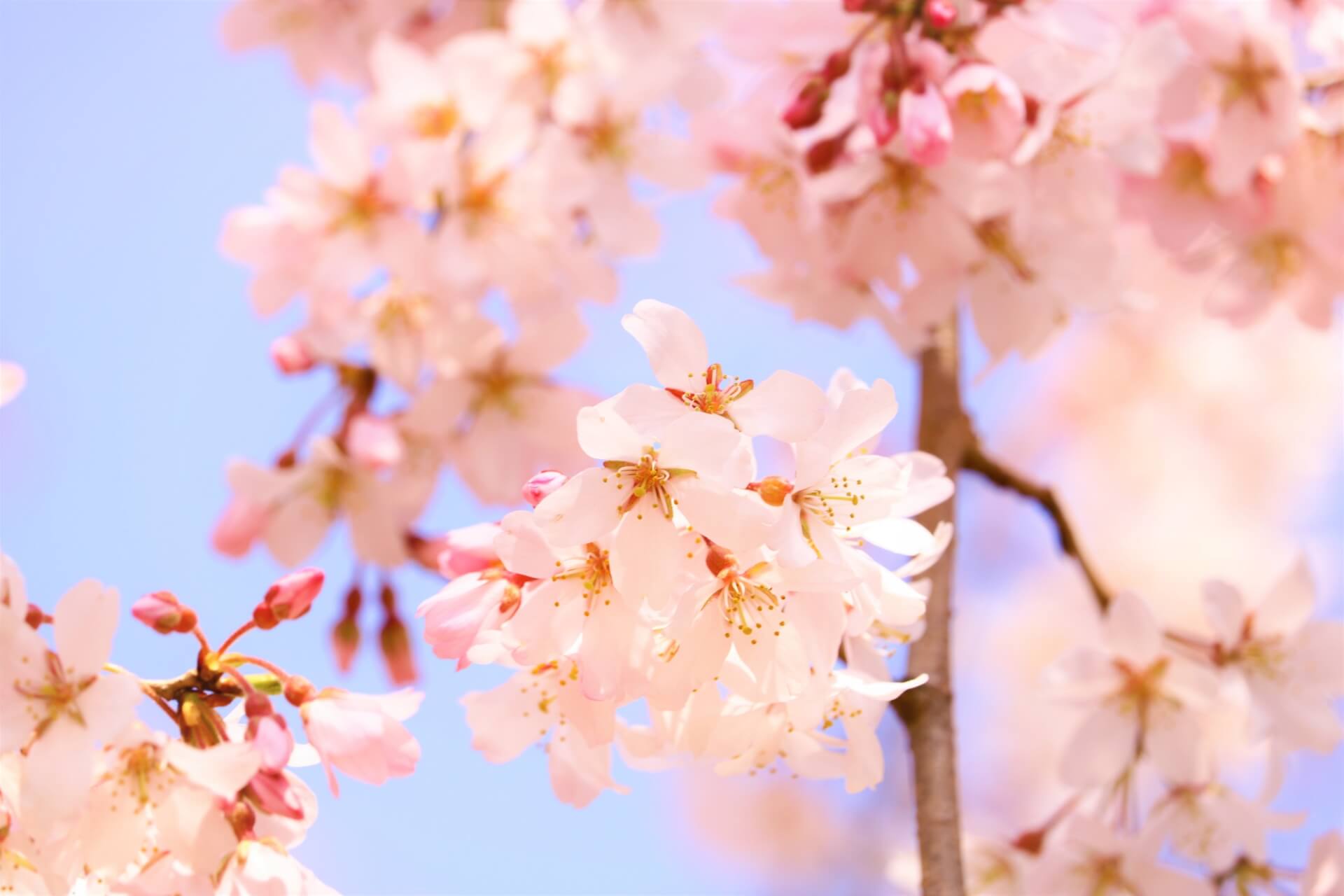
If you're visiting Hakuba for the late ski season in late April and miss the cherry blossoms blooming in Tokyo, you are in for a treat when you arrive in Nagano! Due to its cooler climate, the cherry blossoms of Nagano bloom later than most of the country and will most likely be at their peak around the middle of April. There are any number of places a reasonable distance from Hakuba where you can go to enjoy them.
Recommended
(Spring Only) 1-Day Tour: Snow Monkeys & Cherry Blossoms in Nagano
- Spots:
- NaganoSnow Monkey
- Pick-up:
- Nagano City
- Drop-off:
- Nagano City
Want to enjoy the blossoms on a tour? Our 1-Day Snow Monkeys & Cherry Blossoms in Nagano Tour combines a morning visit to the monkeys with lunch and then afternoon of blossom-viewing at some of Nagano’s best spots. While the tour doesn’t include pick-up or drop-off in Hakuba, you can still join by getting yourself to and from Nagano Station on the day.
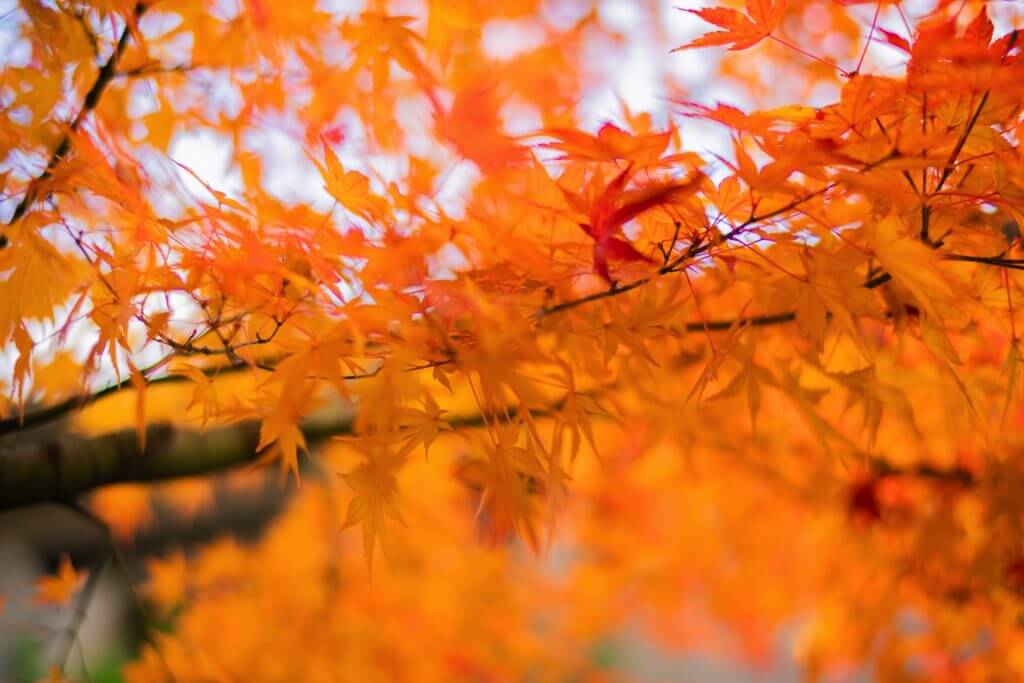
Bookending the blossoms of spring, Hakuba and Nagano are blessed with some of Japan’s best autumn leaves. With the leaves typically at their best from mid-October to mid-November, using the ropeways of Hakuba is a great way to access walking trails through some spectacular forests of red, gold, amber and brown – see below for details.
13 / HAKUBA SUMMER ROPEWAYS / late-May to November
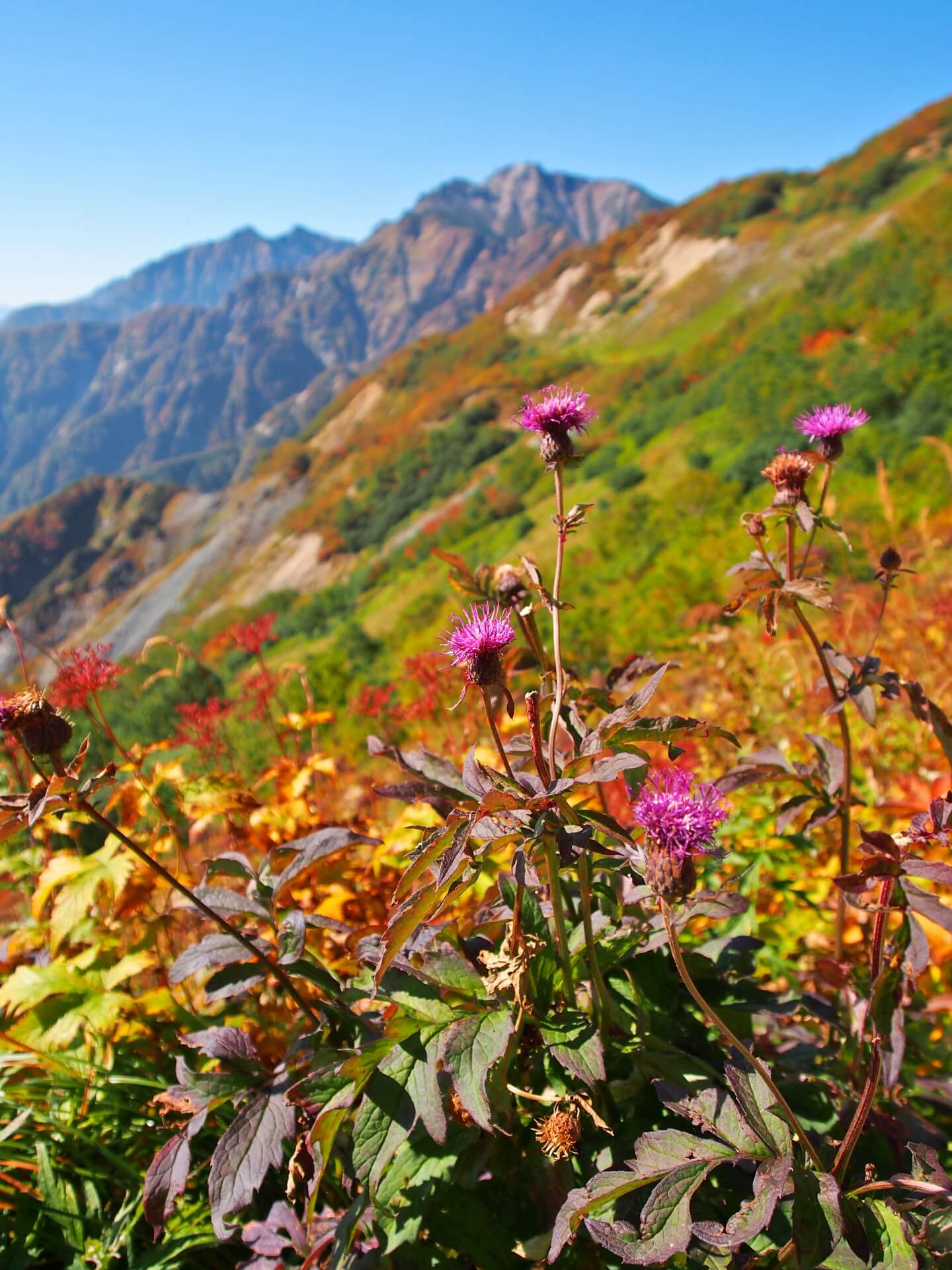
Busy ferrying skiers and snowboarders up the ski resorts in winter, several of Hakuba’s ropeways continue to operate from late-spring to autumn (with brief periods closed either side of winter). Operating from Hakuba Goryu Snow Resort, Hakuba Goryu Alpine Botanical Garden is accessible using the main gondola. Taking 10 minutes to climb to around 1500 metres above sea level, visitors can enjoy the alpine garden of more than 300 varieties of plants, leisurely walking trails and the ‘ALPS 360’ restaurant.
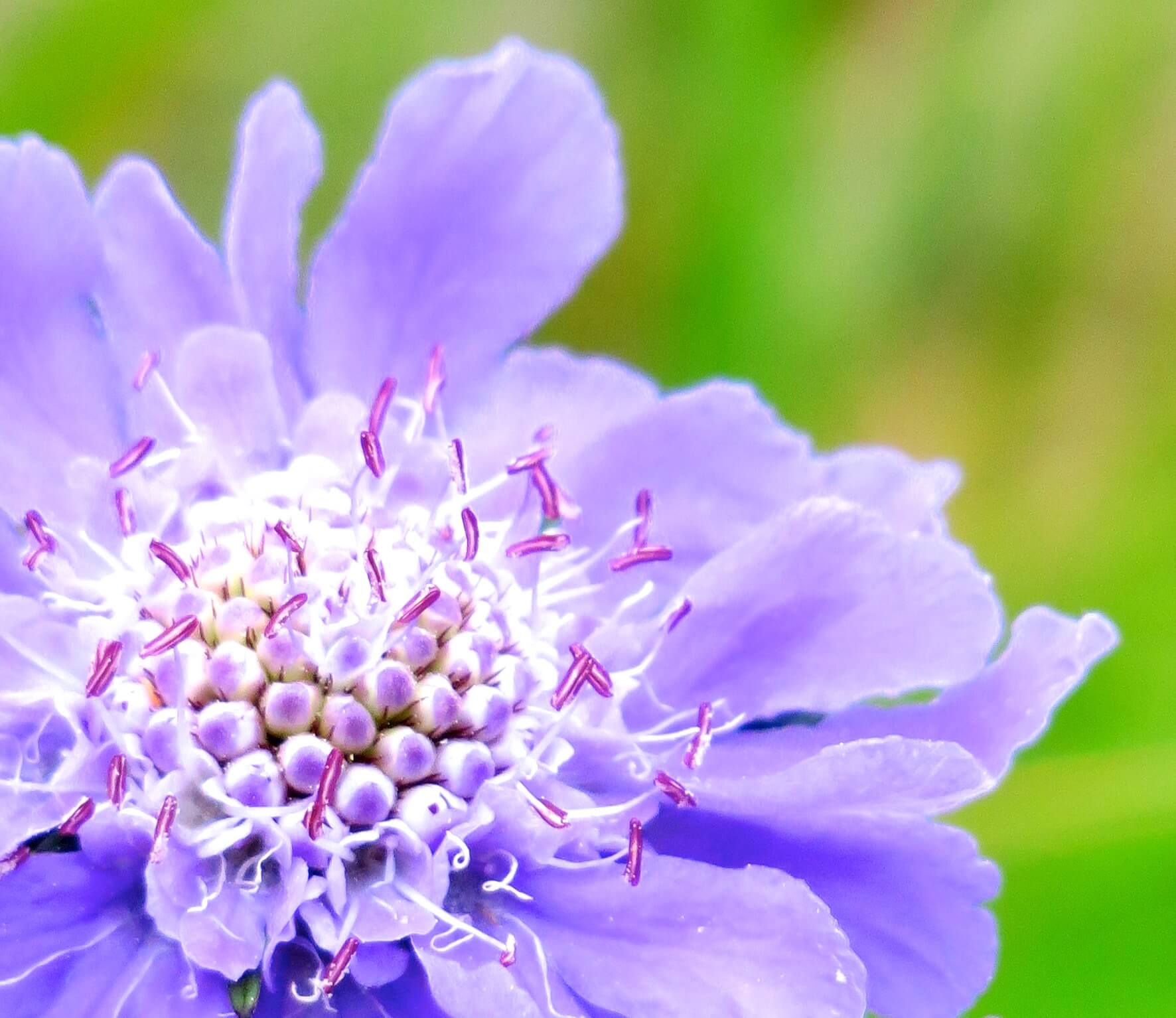
Outside of winter, the ‘Noah’ gondola at Hakuba Iwatake operates from early-June to mid-November and transports visitors to the Hakuba Mountain Harbor including City Bakery and walking trails. Known for its outstanding view of the North Alps and stunning autumn leaves, the Mountain Harbor has quickly established itself as one of Hakuba’s most popular all-year-round destinations. Happo Pond can be accessed using the ‘Adam’ gondola at Hakuba Happo One. Located around 2000 metres above sea level, the pond is around 90-minutes walk from the upper gondola station and blessed with one of Hakuba’s most iconic vistas.
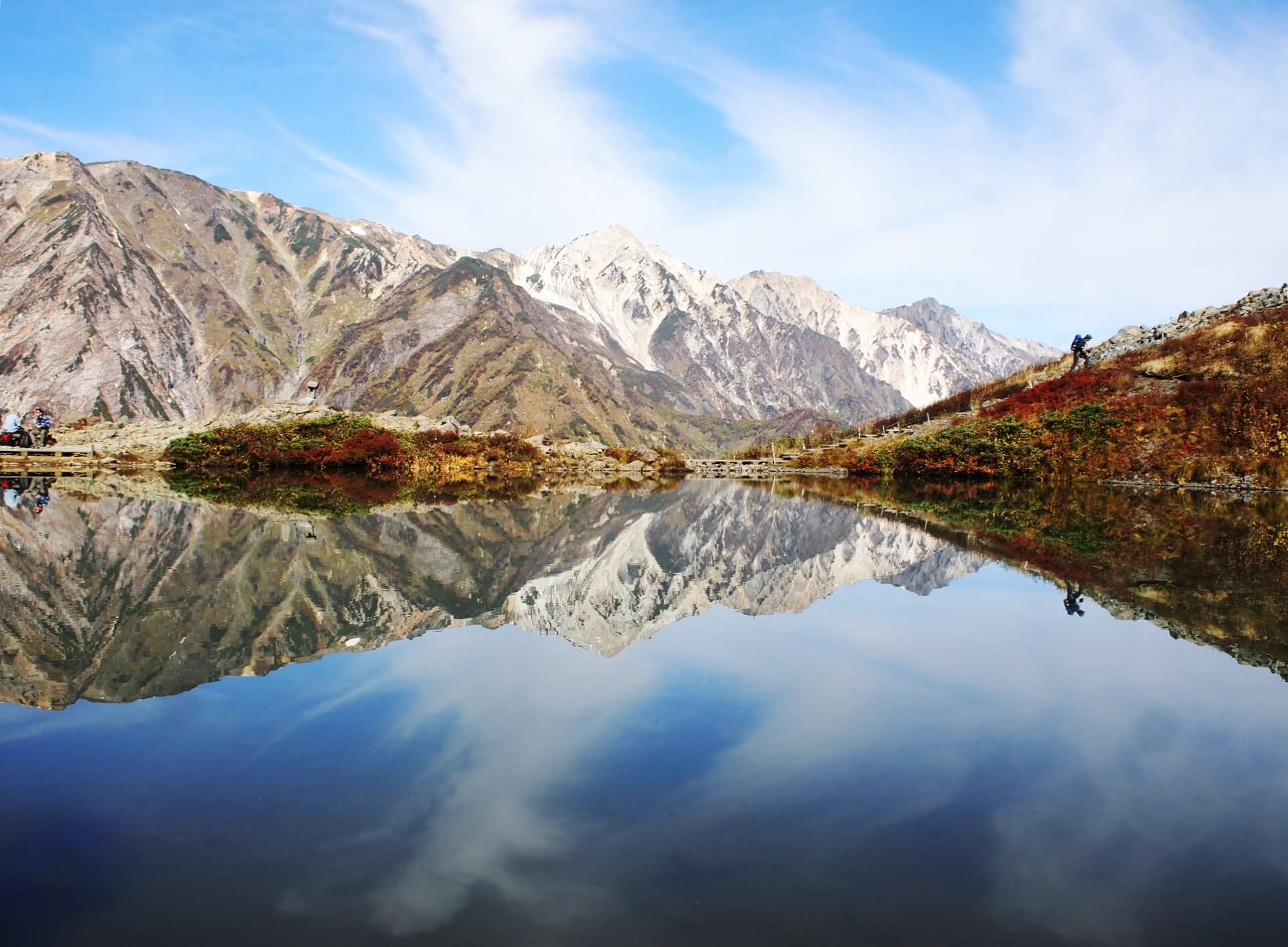
Trails lead onto the pond further into the mountains – more serious undertakings that require appropriate experience, preparation and gear – however, for anyone of reasonable fitness, Happo Pond is a beautiful and rewarding destination. Accessible using the Tsuigake 'Eve' Gondola followed by the shorter ropeway, the Tsugaike Nature Park sits at around 1900 metres above sea level and offers a series of leisurely yet beautiful alpine trails. Courses ranging from 1km to 5.5km / 1 to 4 hours walk provide access over 100 hectares of alpine landscape - known for the beauty of its plants and flowers - and panoramic views of the North Alps rising another 1000 metres above.
14 / HIKING IN THE NORTH ALPS / late-May to November
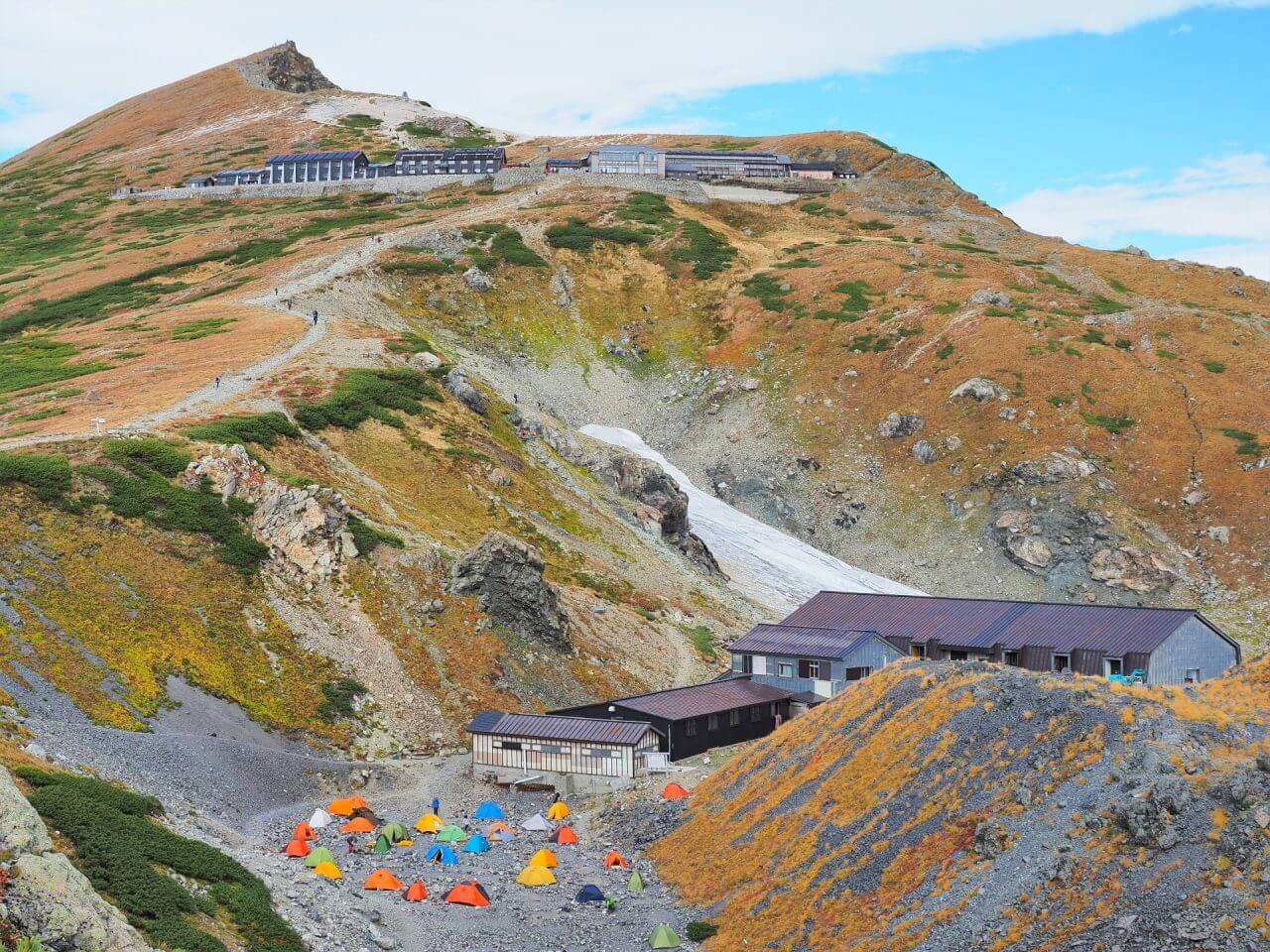
Needless to say, the mountains of Hakuba don’t get any smaller in summer and as such, the North Alps offer some of Japan’s best hiking and mountaineering. As part of the Chubu Sangaku National Park – an expansive area that includes several of Japan’s highest mountains – there are simply too many trails and possible routes to list succinctly here but it’s worth mentioning the popular hike up Mount Shirouma. The trailhead to the route up Mount Shirouma is only a 20 to 25-minute drive from the Hakuba Happo Bus Terminal or Hakuba Station. Known for its dramatic beauty and continued areas of snow throughout the year, including the spectacular Hakuba Daisekkei snowfield, Mount Shirouma is approximately a 10-hour climb requiring an overnight stay at one of the mountain lodges along the route. Hakuba is a gateway to the North Alps, a spectacular region that includes the Tateyama-Kurobe Alpine Route, Kamikochi and more. For more information, see our 'Hiking, Trekking, Mountaineering, Caving & Climbing' page.
15 / MOUNTAIN-BIKING & TRAIL RUNNING / June to November
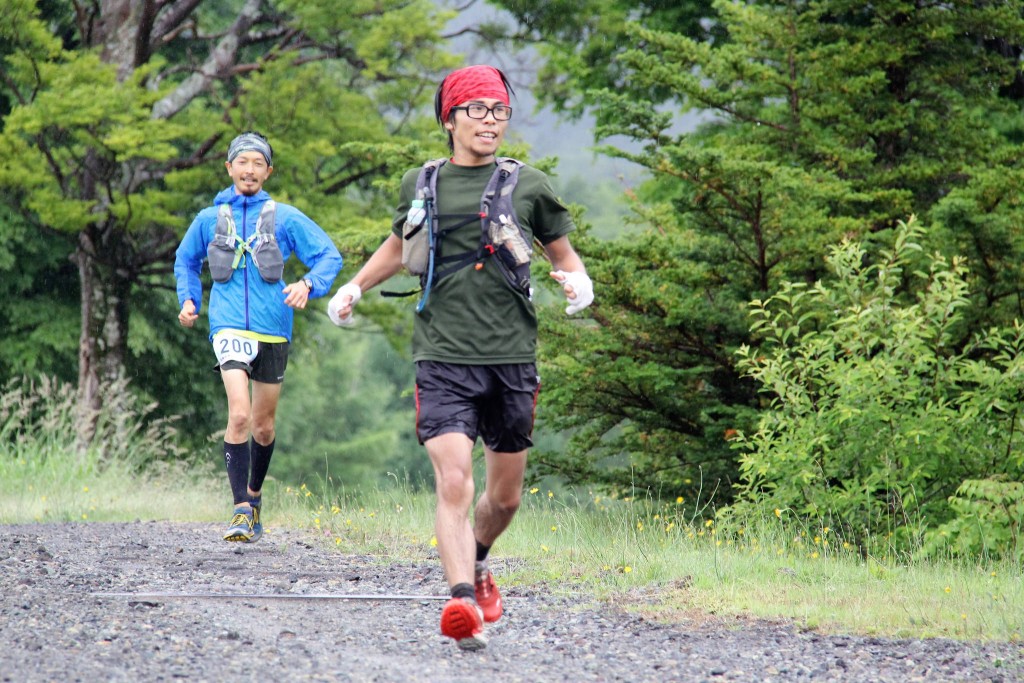
In recent years, Hakuba has established itself as Central Japan’s biggest and best green season sports destination with mountain-biking and trail running both becoming hugely popular. Keen trail-runners should also consider heading across to Shiga Kogen in July and October for two events: the Shiga Kogen Mountain Trail Run and the Shiga Kogen Extreme Trail Run. Wildly popular with Japanese, these events are attracting more-and-more international entrants every year. Always given a warm welcome, it’s a great way to challenge yourself on trails through one of Central Japan’s great national parks. For more information, see our 'Running, Trail-Running, Cycling & Mountain-Biking (MTB)' page.
16 / HAKUBA ON THE WATER / June to November
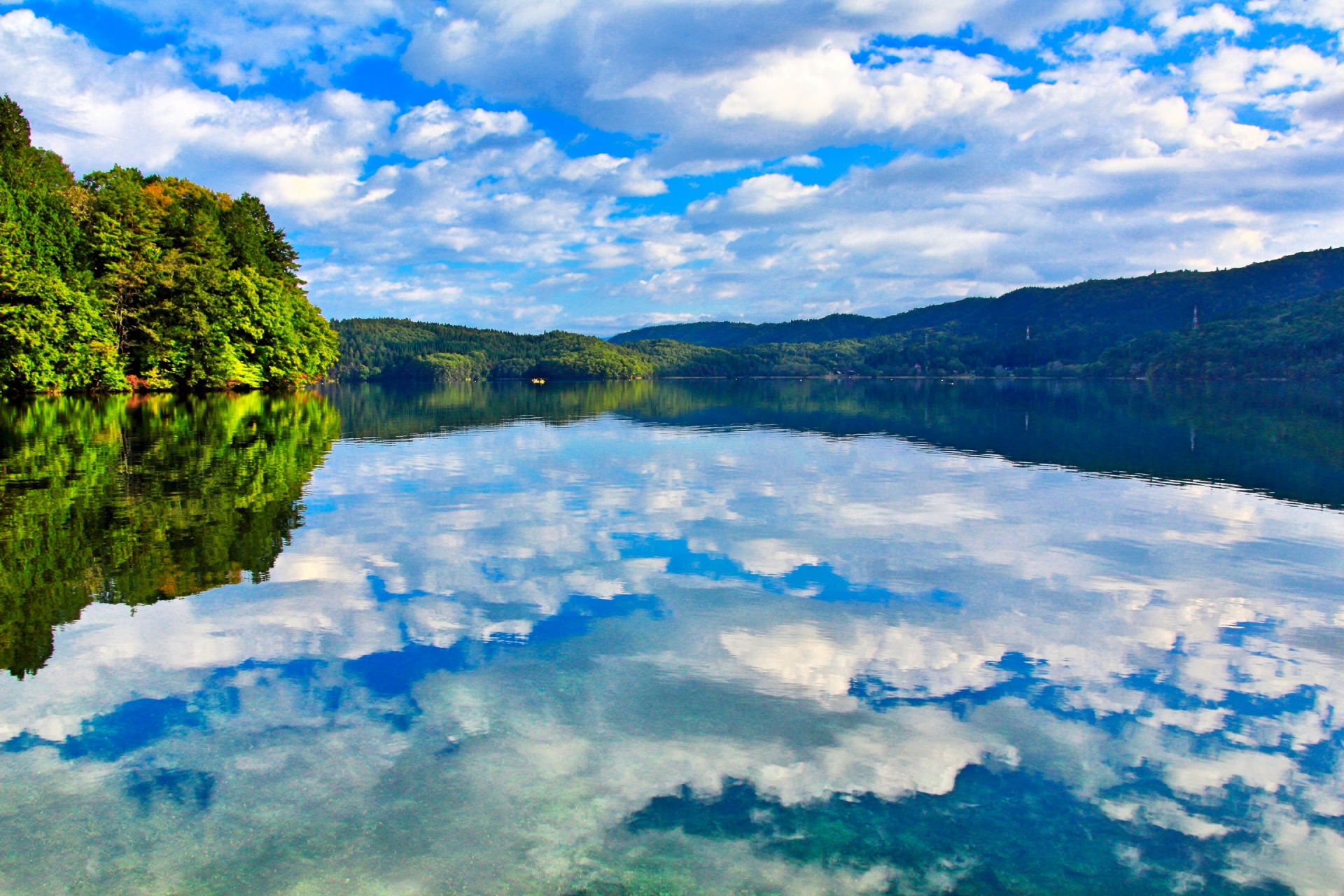
As the temperature rises through late-spring and into summer, it’s time to hit the water! Hakuba is blessed with some beautiful rivers and lakes, which can be enjoyed rafting, kayaking and canoeing. In recent year, SUP or ‘stand-up paddling’ has become popular in Japan – a fun and healthy activity for visitors of all ages. With guided outdoor experiences on the water available throughout the green season, Hakuba has something to offer for everyone including kids and families. Within easy reach of the Hakuba Happo Bus Terminal and Hakuba Station, Lake Aoki is popular throughout summer. Known for the beauty of its water and surrounding forest, visitors to Aoki can enjoy the activities mentioned above, with camping, bbq facilities and accommodation available on the shores of the lake. For more information, see our 'Canoeing, Kayaking, Rafting, Canyoning & SUP' page.
17 / HAKUBA IN THE AIR / April to November
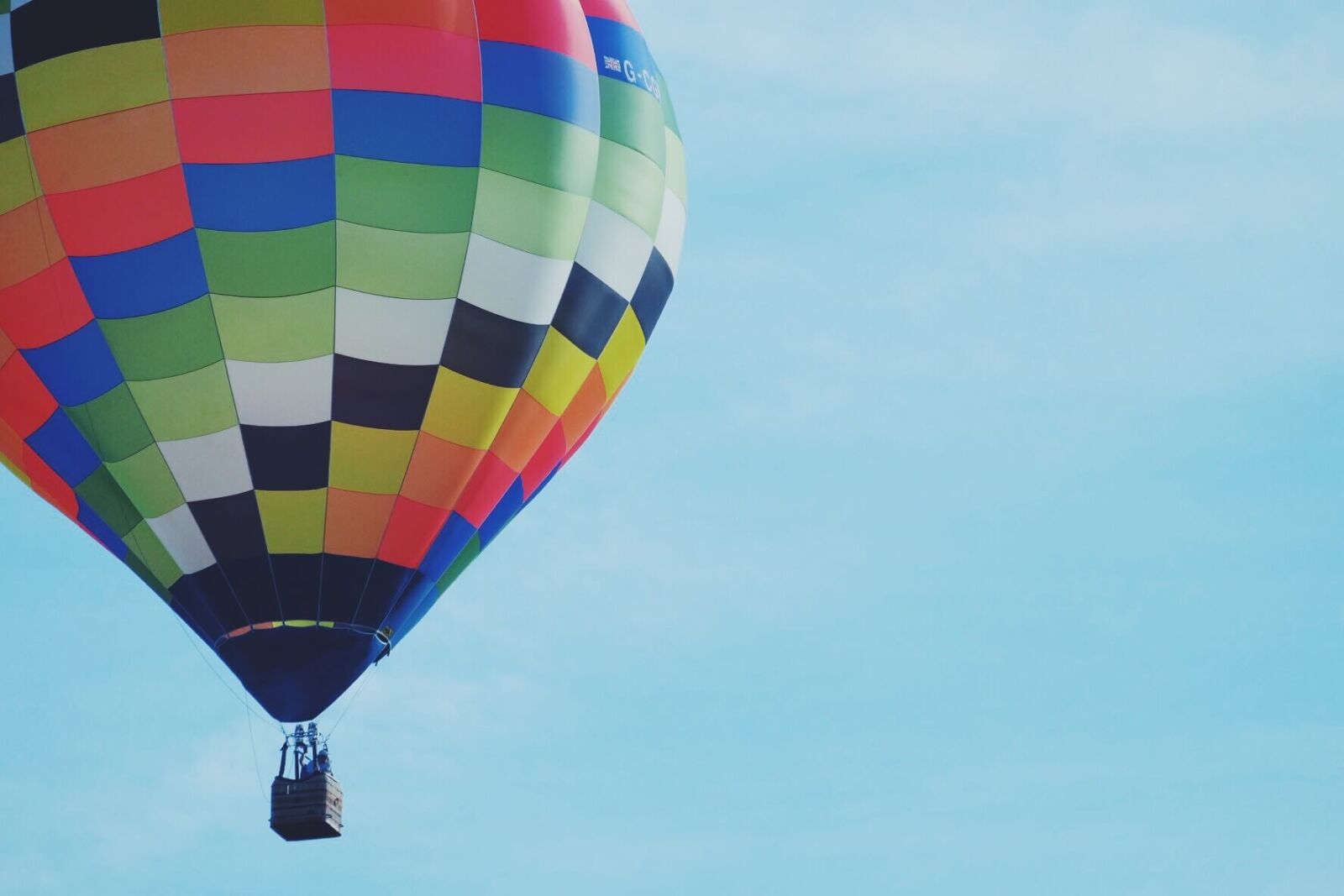
Hot air ballooning is another hugely popular way to enjoy Hakuba from spring to autumn! Operating from the Hakuba Olympic Ski Jump Arena, flights only take a total of 20-minutes but in that time, provide guests with unimpeded and stunning views of the North Alps and Hakuba Valley. Taking place in the morning when weather conditions and light are at their best, hot air ballooning is especially popular during the autumn leaves of October and November. For more information, see our 'Hot Air Ballooning, Hang-Gliding & Paragliding' page.
18 / FESTIVALS OF SPRING, SUMMER & AUTUMN / May to November
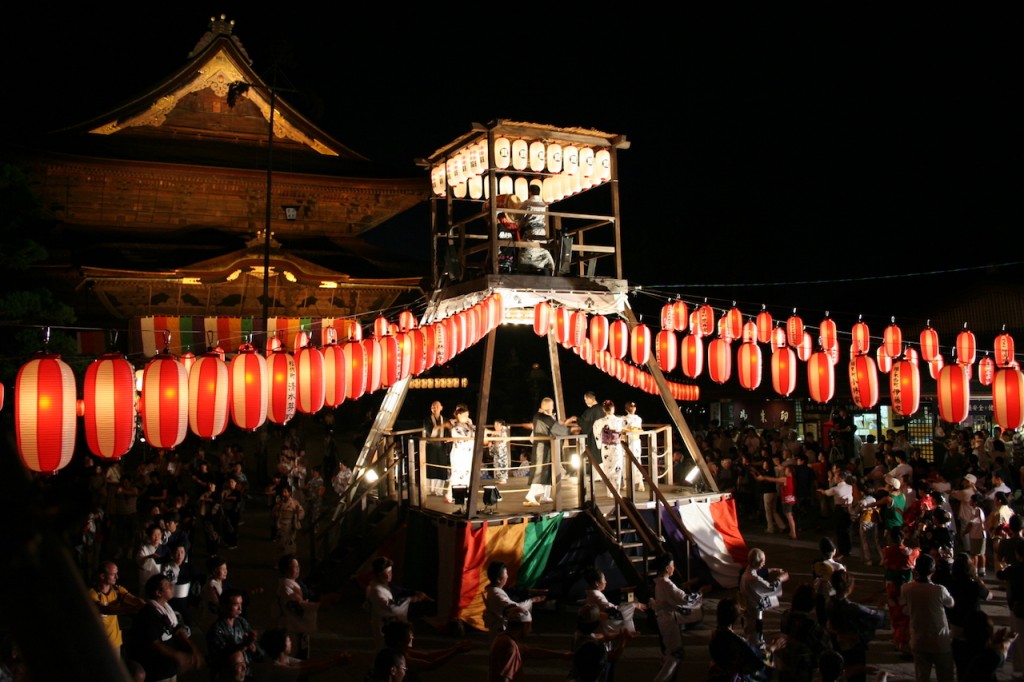
Known as ‘matsuri’, festivals play an important role in bringing communities together to celebrate all types of weird and wonderful things. While in Hakuba through spring, summer and autumn, visitors are within close proximity of some fantastic festivals including Nagano City’s ‘Binzuru Dance Festival’ (pictured above) that sees troupes of dancers take over the streets, totaling around 200 groups and thousands of onlookers. In the heat of summer, the festival attracts a big crowd and great atmosphere. Also taking place in August, Matsumoto’s ‘Bon Bon’ Dance Festival is just one of the many festivals in a busy calendar of events in the famous castle town.
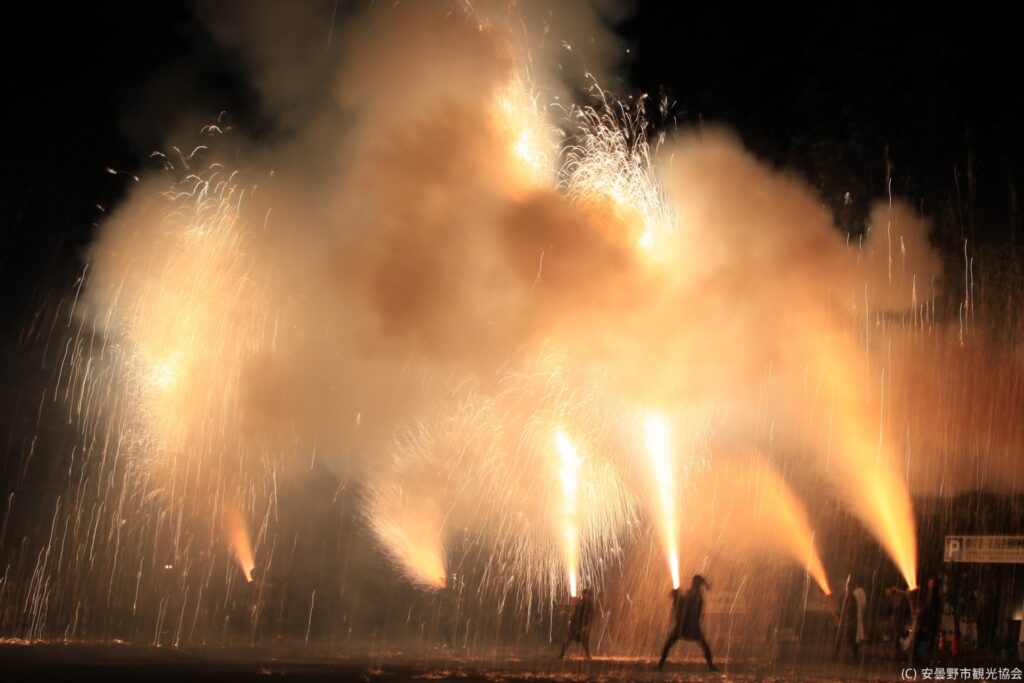
Between Hakuba and Matsumoto, the ‘Azumino Fireworks Festival’ (pictured above) takes place on August 14th each year. This decidedly local festival attracts a big crowd to see the warm summer night burst into light with around 12,000 fireworks exploding in the sky above. The ‘Zenko-ji Summer Ennichi Festival’ (pictured above) takes place at the Nagano’s historic Zenko-ji Temple in mid-August. This event draws visitors from far and wide – a spectacular display of the continued importance of the temple to the people of Nagano.

The third weekend of August sees Shiga Kogen’s three-day ‘Daija Festival’ (pictured above) take place in the beautiful surroundings of Joshinetsu Kogen National Park. In October, the historic town of Matsushiro - part of Nagano City - plays host to its autumn ‘Sanada Clan Jumangoku Festival’ – a spectacular celebration of the town’s samurai heritage.
Recommended
[NOV 23 ONLY] 1-Day Tour: Ebisu-ko Fireworks Festival & Snow Monkeys
- Spots:
- NaganoSnow Monkey
- Pick-up:
- Nagano City
- Drop-off:
- Nagano City
Finally, in November, Nagano City hosts the stunning and huge ‘Ebisu-ko Fireworks Festival’. Attracting an estimated crowd of around 400,000 people, more than 15,000 fireworks explode in the crisp autumn sky in thanks for a good harvest and heralding the winter to come. Luckily, we offer a tour of this festival that is paired with a morning visit to the Snow Monkeys! Don't miss out by booking your seat before we sell out. These are just some of the many events taking place near Hakuba through spring, summer and autumn.
19 / CHARTER A BUS TO NEARBY ATTRACTIONS / all year round
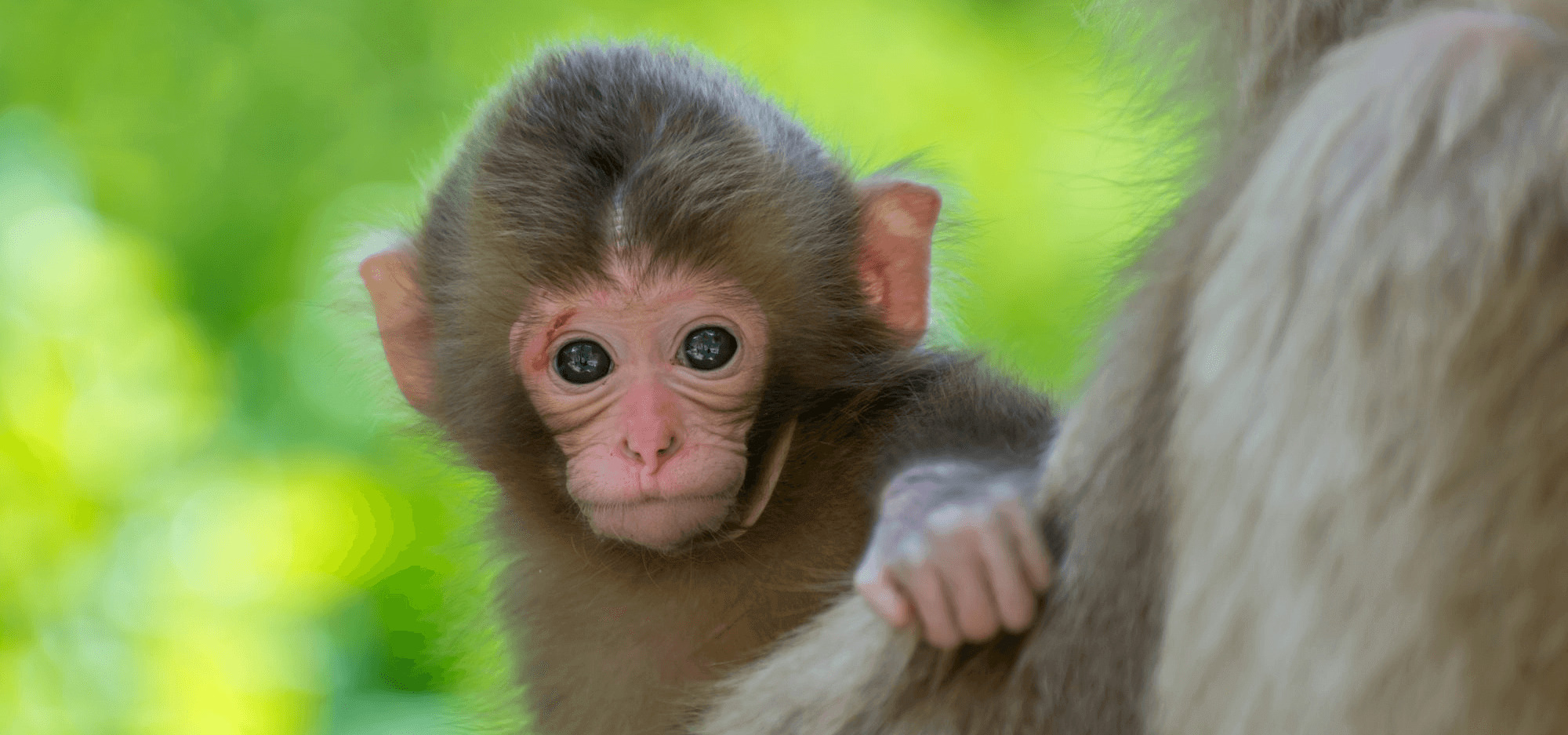
Getting around in Nagano can be difficult without a car, especially in the Hakuba area. Trains run infrequently and the mountain ranges running through the prefecture mean that the trains that do exist often have to take large detours on the way to their destinations. If you don't want to rent a car to get around, you can instead rely on our private charter service.
HAKUBA → SNOW MONKEY PARK (3HR)→ HAKUBA
- Duration:
- 7-8 Hours
- Spots:
- Snow Monkey, Hakuba
With clean vehicles and friendly drivers, we offer door-to-door service, and can bring you around for the day before returning you to your original location or drop you off somewhere completely different. Just let us know your plans, and if you aren't sure where to go we are ready to offer advice! To browse all of our charter services to and from Hakuba, please see our Charters From/To Hakuba page here!
20 / TATEYAMA-KUROBE ALPINE ROUTE / April to November
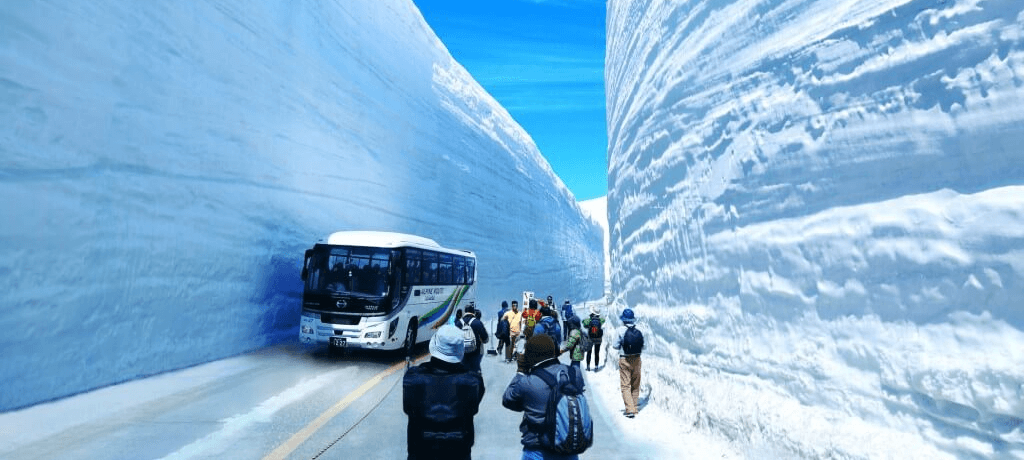
Best Selling
[Spring Only] 1-Day Tour from Nagano: Snow Walls of Tateyama-Kurobe Alpine Route
- Spots:
- NaganoAlpine Route
- Pick-up:
- Nagano City
- Drop-off:
- Nagano City
Heralded as one of Japan's best experiences, traversing the Tateyama-Kurobe Alpine Route takes approximately 6 hours without allowing for time to stop and enjoy all of its stunning sights. In reality, undertaking a visit to the Alpine Route is therefore a full-day activity. Visitors can start from Toyama via Tateyama Station or Nagano via Ogizawa Station, and choose to finish on the other side or return to their point of origin. A series of mountain transports including trolley buses, cable cars, a ropeway, and coaches transport visitors to and from Murodo Station – which at 2540 meters is the highest station in Japan. Open from mid-April to mid-November, the Alpine Route is most famous for its immense snow walls which, at their peak, ascend 20 meters above the road below. The walls are at their best from the opening day in April until late-June, after which outstanding hiking is available through summer and autumn, climaxing with stunning autumn colors in October until the route closes again in November.
21 / PARTICIPATE IN A TOUR FROM NAGANO / all year round

As our hub in the region, we offer a variety of tours from Nagano every single day of the year. Whether you are taking a few days after a ski trip, or looking for things to do during a summer hiking excursion, there is always something available to you. For a total run down, have a look at our “Best Tours in Nagano” page, where in depth descriptions of every tour that starts from Nagano Station can be found. For those looking to travel across Japan while seeing what each local area has to offer, our tours can be combined to effectively remove the need for public transport and allow you to leave the logistics up to us. Keep reading below for some ideas on how to map your journey from Hakuba through Japan.
22 / TOUR MATSUMOTO AND KAMIKOCHI / all year round (Kamikochi: April - November)
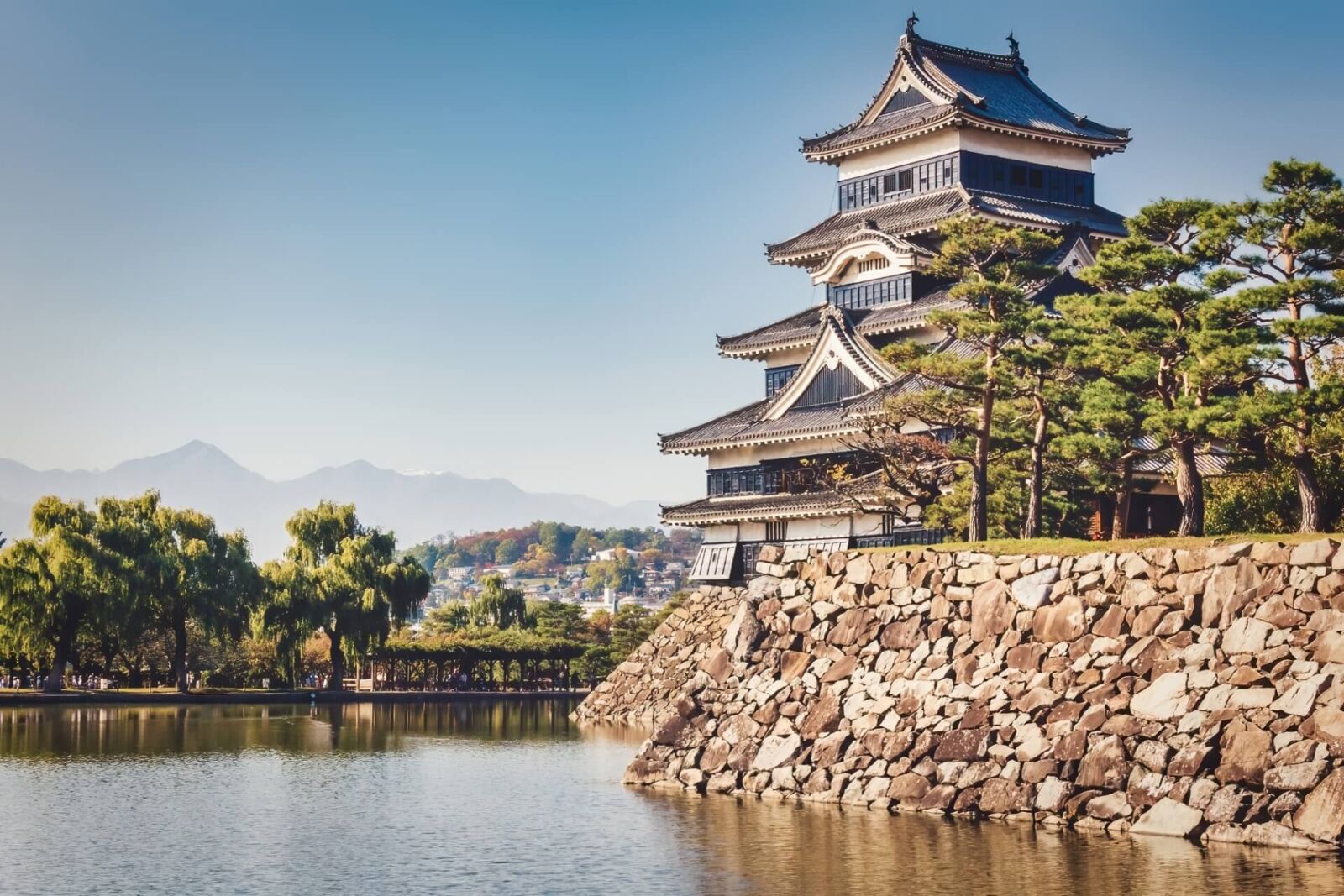
Popular
1-Day Tour from Nagano and Matsumoto: Kamikochi & Matsumoto Castle
- Spots:
- NaganoMatsumotoKamikochi
- Pick-up:
- Nagano CityMatsumoto
- Drop-off:
- Nagano CityMatsumoto
Nagano’s second biggest city, Matsumoto was once the cultural center of the region and still maintains a number of attractive historical sites as well as a unique culture based around music, hiking, and crafts. If coming from Hakuba, you can either utilize the public buses or trains available to reach Matsumoto and start your tour, or you can head over from Nagano - all Matsumoto tours offer pickup from both locations. Matsumoto Castle and the Kamikochi Alpine Valley are two attractions you must see when visiting, and they can be easily accessed on our tour of the area.
HAKUBA → MATSUMOTO CASTLE(3HR) → HAKUBA
- Duration:
- 6-7 Hours
- Spots:
- Matsumoto, Hakuba
Or, if you and your group want to check out the town of Matsumoto and its iconic Matsumoto Castle at your own pace, we offer private transportation that can take you directly there from Hakuba! This is a great option for a day-trip on your day off from skiing, and perfect for those traveling in large groups as it takes away the hassle of public trains and buses.
23 / HEAD TO NARAI AND THE NAKASENDO / all year round
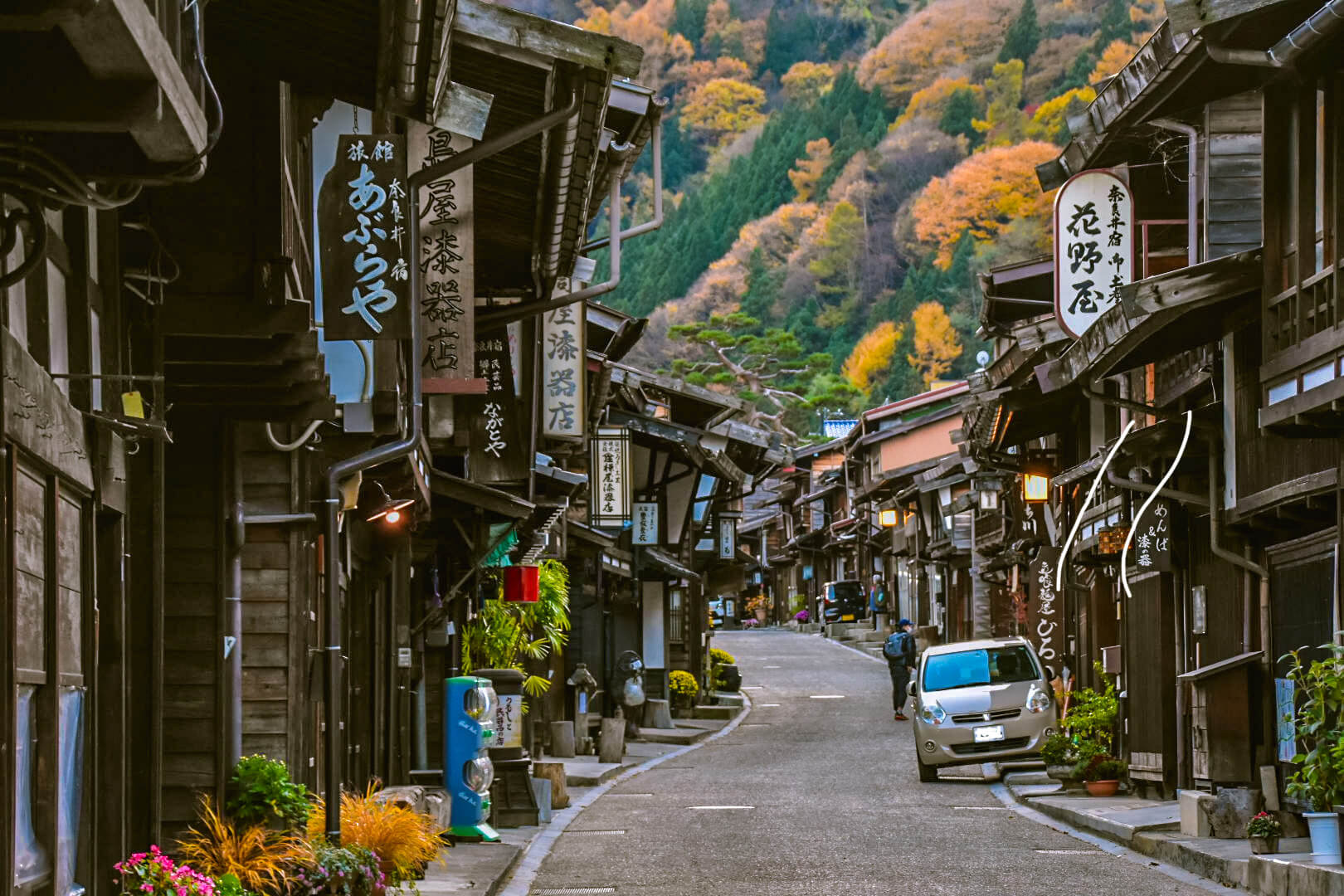
Located in the southern part of Nagano, the Nakasendo Trail (also known as the “Samurai Road”) weaves its way south towards Nagoya and on to Kyoto through the Kiso Valley. Closest to Hakuba amongst these post towns is Narai, which can be reached by car or by train from Matsumoto. With 1 kilometer of preserved traditional buildings lining its main street, you will feel like you have stepped back in time once you have arrived. A number of crafts utilizing the local wood and lacquer are made here, and can be purchased as a memento of your visit. Heading further south, the Nakasendo continues for nearly 90 km until you reach the towns of Magome and Tsumago, also beautiful and connected by one of the best preserved stretches of the original road.
Recommended
1-Day Tour from Nagano and Matsumoto: Experience Matsumoto Castle and Narai-juku
- Spots:
- NaganoMatsumotoKiso Valley
- Pick-up:
- Nagano CityMatsumoto
- Drop-off:
- Nagano CityMatsumoto
Coming from Nagano or Matsumoto, these destinations can be easily reached on our tours, both Narai and Magome/Tsumago. Of particular interest to skiers is the Narai Tour, which runs year round and lets you see Narai with heavy snow and long icicles decorating its old homes.
Recommended
1-Day Tour from Nagano and Matsumoto: Step into the Past on the Nakasendo
- Spots:
- NaganoMatsumotoKiso Valley
- Pick-up:
- Nagano CityMatsumoto
- Drop-off:
- Nagano CityMatsumoto
For those staying in Hakuba in the green season, our hiking tour of the Nakasendo, including an 8km walk on the best preserved part of the trail, is a great option. You can either start the day by heading to Matsumoto from Hakuba, or if you have already taken our Snow Monkey tour to Nagano and spent the night there, pickup from Nagano is available. You can choose to get off in Matsumoto if you wish to spend a night in the area as well.
Or, if you are not in need of a guide and want to explore the Nakasendo at your own pace, we offer private transportation that can take you directly from Hakuba to Narai-juku! This is another great option for a day-trip from the ski resort.
24 / VISIT HISTORIC TAKAYAMA AND KANAZAWA / all year round
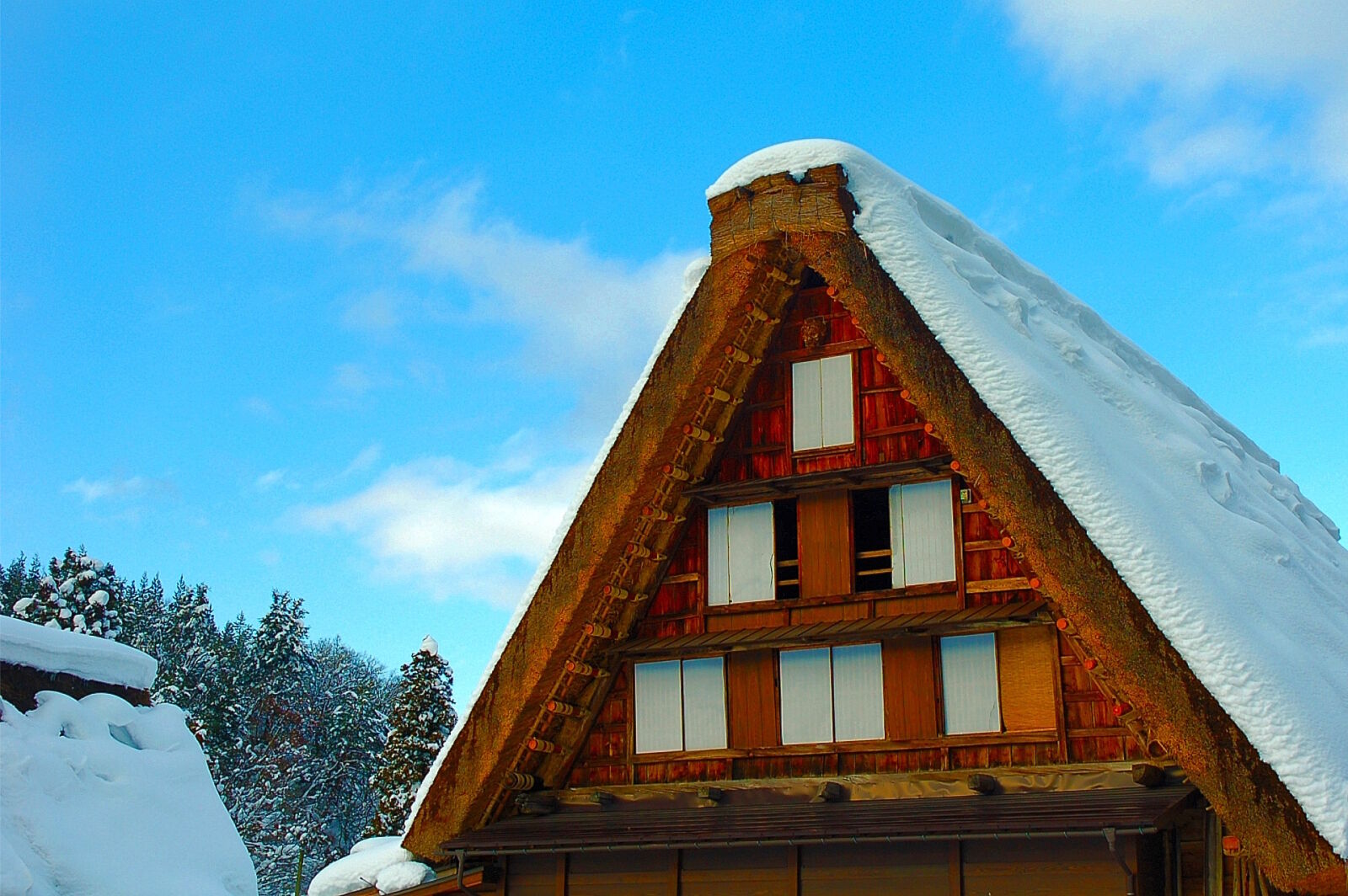
To the west of Hakuba, across the Japanese alps, lay Takayama and the city of Kanazawa. Around 2 hours drive from each other, these destinations are similar in that they both offer a glimpse into Japan’s history - but otherwise, they couldn’t be more different. Takayama is a sleepy town, while Kanazawa is a sprawling city once home to the Lord of Japan’s richest domain. From Hakuba or Nagano, we offer a charter service which will take you to Takayama (along with a few fun stops along the way), from where you can continue on your own or take one of our tours starting from Takayama Station.
Best Selling
1-Day Tour from Takayama: Explore Scenic Old Japan in Takayama and Shirakawa-go
- Spots:
- TakayamaShirakawago
- Pick-up:
- Takayama
- Drop-off:
- TakayamaKanazawa
One of these, our tour of Takayama’s Old Town and the UNESCO World Heritage village of Shirakawa-Go, also includes the option of Kanazawa Drop Off, allowing you and your luggage to move easily from Takayama to Kanazawa on our bus, stopping to see the must see attractions along the way. Once in Kanazawa, there is plenty to do - it's one of the biggest cities on the Sea of Japan coast. Of course, we offer tours here almost every day of the year as well, meaning you can hop on or off as you please and enjoy flexibility when combining our tours to make your own multi-day excursion. To see more suggestions around Kanazawa, please see our 'Best Tours and Itineraries around Kanazawa' page.
25 / GO FURTHER AFIELD IN KANSAI / all year round
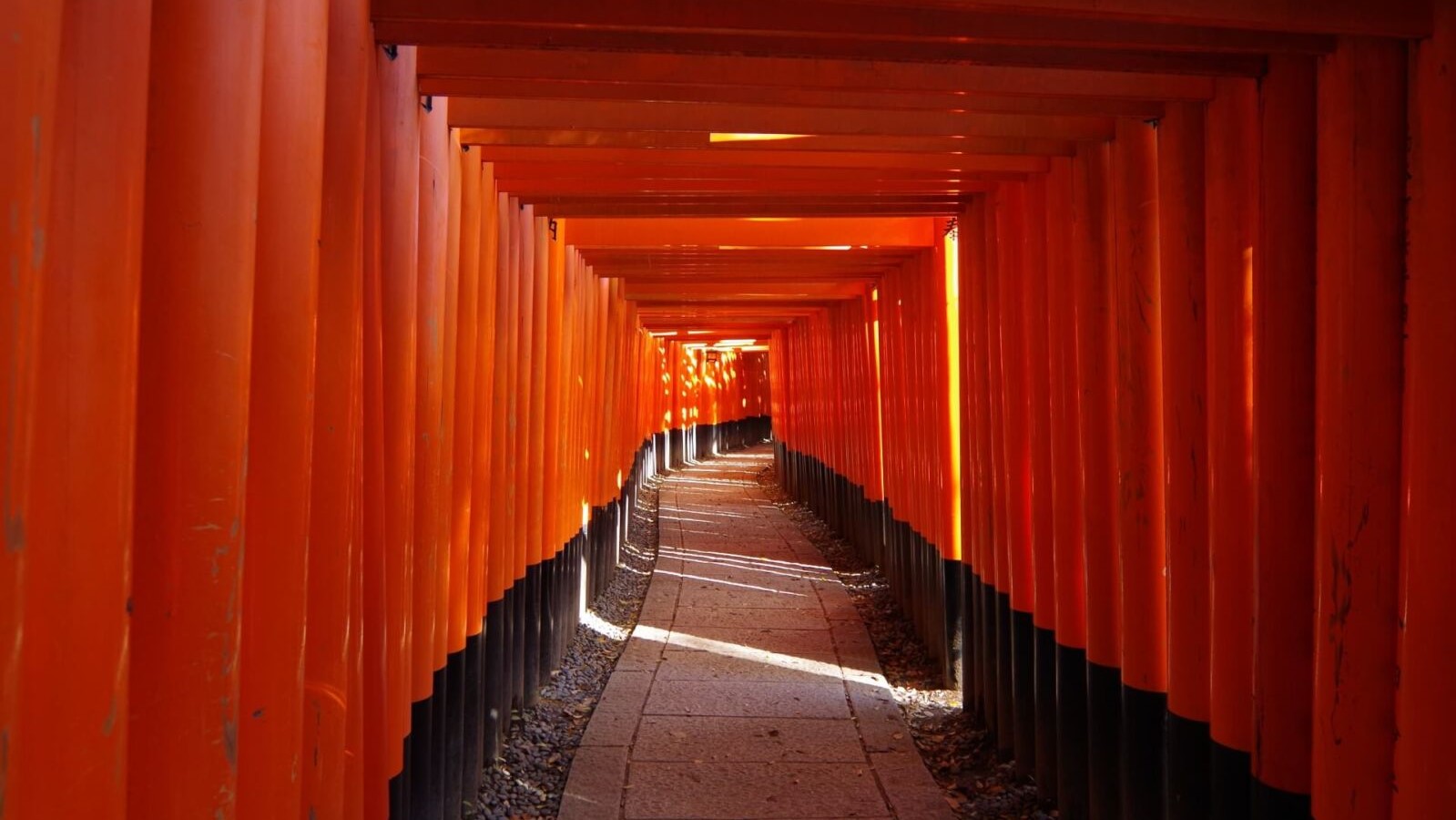
Even farther west of Hakuba (around 450km by road) is Kansai, home to such famous cities as Kyoto and Osaka, and the traditional heartland of Japan itself. While not exactly next door to Hakuba, skipping over this area when visiting Japan would be a mistake, and even if skiing is your main goal we recommend you make room in your schedule for a trip here. From Hakuba, you can reach the area most simply by first heading to Nagano, and from there taking the express train to Nagoya before switching to the Shinkansen. If you have followed our example itinerary above and linked tours all the way from Hakuba to Kanazawa, you can use the Shinkansen from Kanazawa to Tsuruga, followed by the Thunderbird Express Train from Tsuruga to Osaka/Kyoto to make the journey without much hassle (and quickly, thanks to the speed of Japan's rail system).
Once in Kansai, we have a number of tours starting from Osaka, Kyoto, Kobe and more that will introduce you to the culture and sights, both famous and unknown, that Kansai is so proud of. With a guide to help you, you will have no need to fear getting lost or missing your train - everything will be arranged and timed to make sure you enjoy everything to its fullest while also getting around on time. Learn about the best tours in Kyoto, Osaka, and Kobe at each of our pages detailing our offerings in their respective regions.
Best Places to Stay in Hakuba
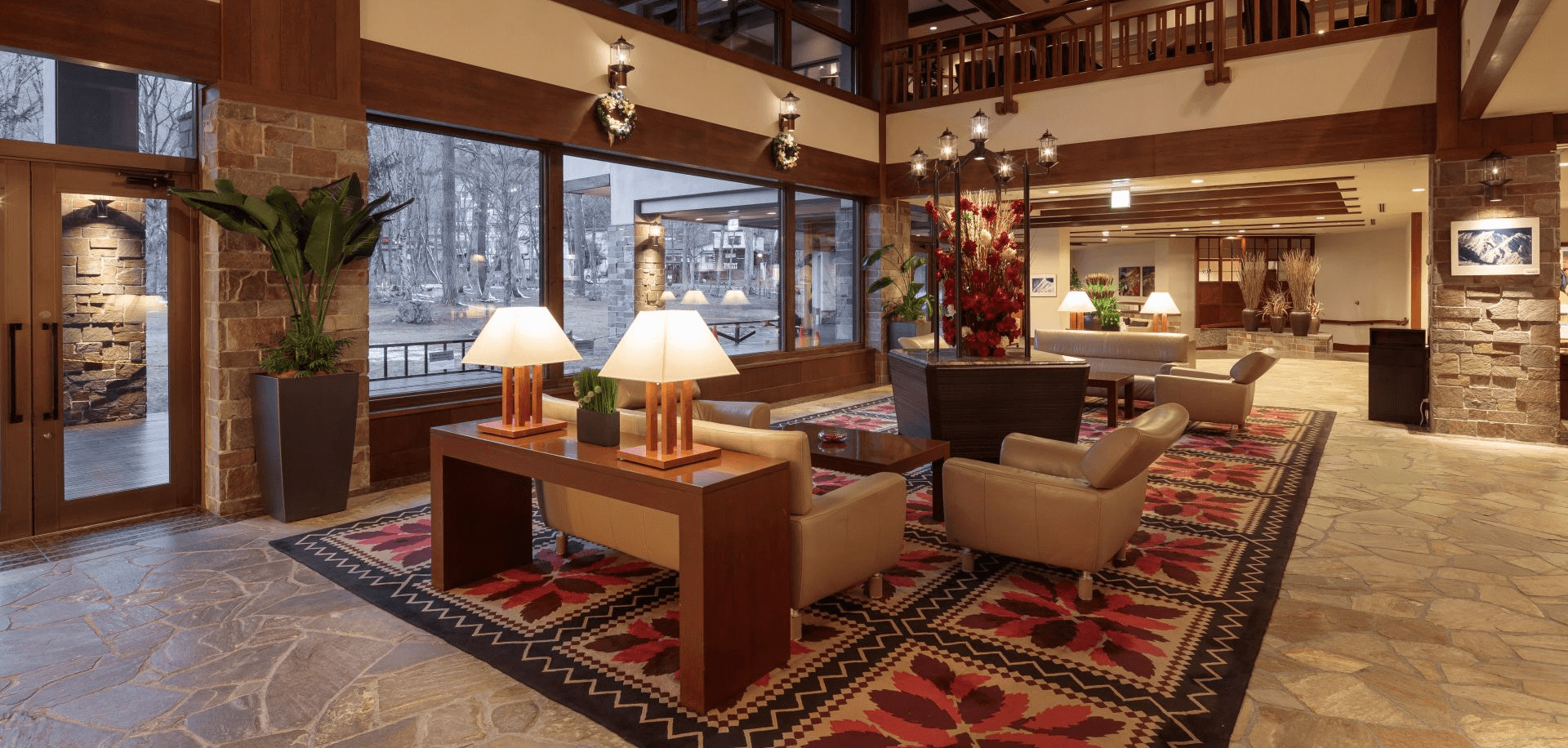
As Nagano’s best-known and most popular winter sports destination, Hakuba is now quickly developing a reputation as an all year round destination offering just as many reasons to visit in spring, summer and autumn. With its reputation built on winter, it’s no surprise that most accommodation can be found in and around the ski resorts and therefore, spread-out across the valley. Choosing where to stay depends on which resort you want to visit in winter, the activities you wish to enjoy from spring to autumn, and the range of dining and nightlife you want access to. For a breakdown of each area and what's on offer, see our 'Where to Stay in Hakuba?' page.
Accommodation & Ski Packages in Hakuba
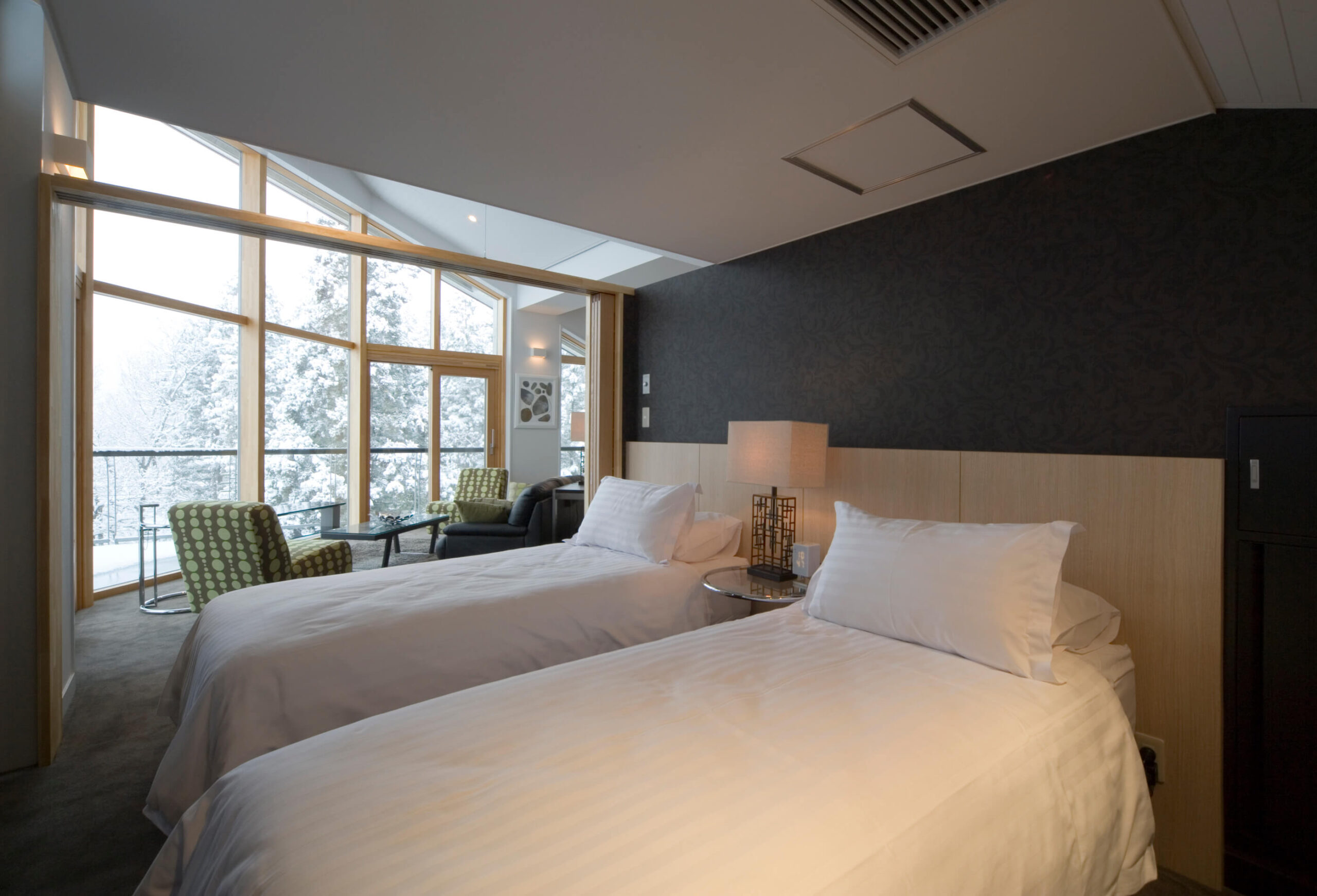
Based in Nagano and operating all year round, we are a registered travel agent, tour and charter operator offering a full-suite of winter services including ski / snowboard packages, accommodation, lift passes, private charters and a range of tours including both group and private options covering the resorts of Hakuba. The multiple resorts of Hakuba Valley are among Nagano's most popular, offering a plenty of terrain and the region's best backcountry skiing and snowboarding. Hakuba boasts the most services for English-speaking visitors and huge range of accommodation including plenty of mid to high-end options, shopping, restaurants and nightlife. Always popular, it pays to book early - you can find a list of accommodation in Hakuba on our dedicated page here, and feel free to contact us for a personalized quotation!
Hakuba Valley Ski Resorts: The Stats & Facts
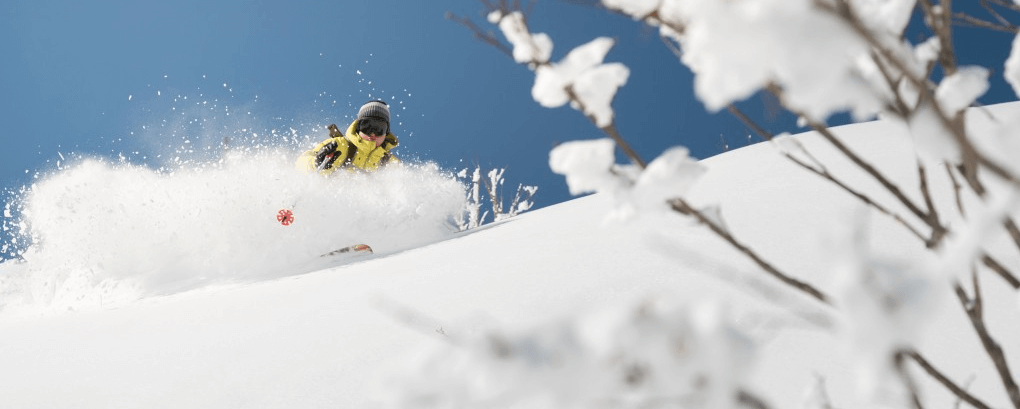
The resorts making-up Hakuba Valley are some of the most popular in Japan, offering fantastic skiing and snowboarding in combination with lots of great accommodation, restaurants and nightlife. Not sure why which is right for you? Our ‘Hakuba Valley Ski Resorts’ page has everything you need to know to plan and book your next winter getaway including all the resort stats and facts, how to get there and of course more accommodation and ski package info.
Winter Deals in Nagano 2025/26
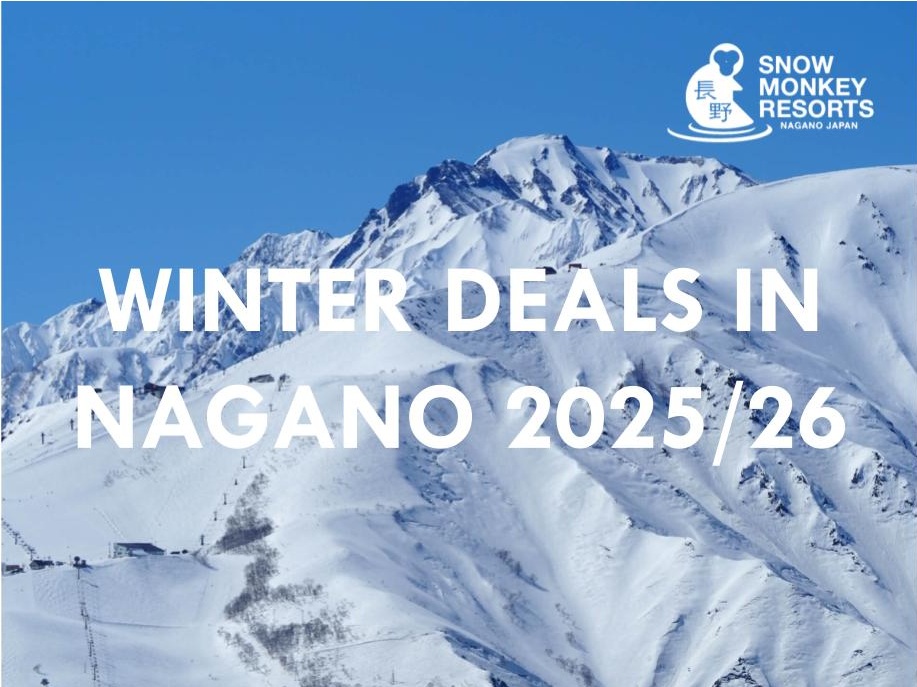
Based in Nagano and operating all-year-round, we offer lots of services each winter! Our ‘Winter Deals in Nagano 2025/26’ page includes our winter tours, private tours and charters, ski packages, accommodation and more. No matter the time of year, we always have one eye on winter and here to help you plan and book your ideal snow escape to Nagano.
How to Get to Hakuba
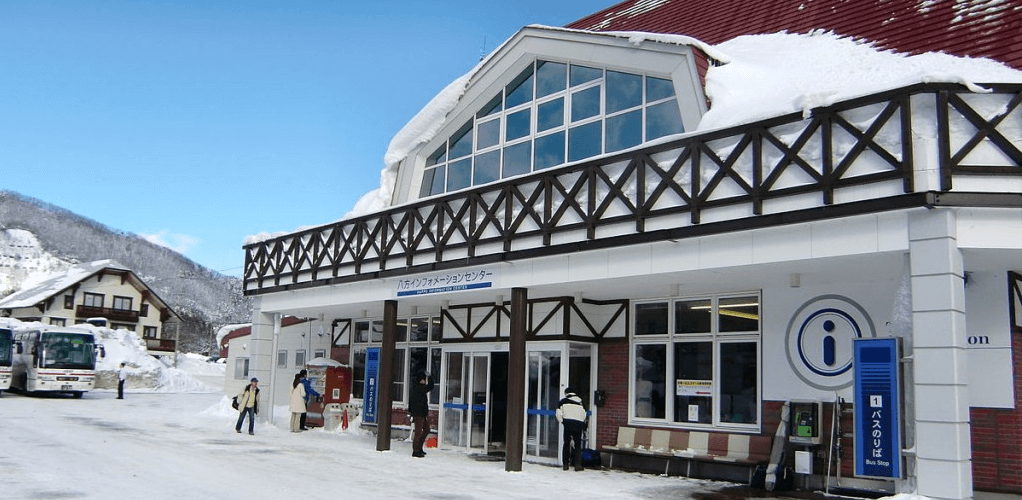
Hakuba lies around one hour to the west of Nagano City and can be easily reached using buses from Nagano Station and the Tokyo airports, by train, by car or by arranging private transport straight to your accommodation. Our ‘How to Get to Hakuba’ page explains how to reach the valley from different areas of Japan. If you are coming from Tokyo, see our "How to Get to Hakuba from Tokyo" page for detailed directions!
Tours and Charters from Hakuba
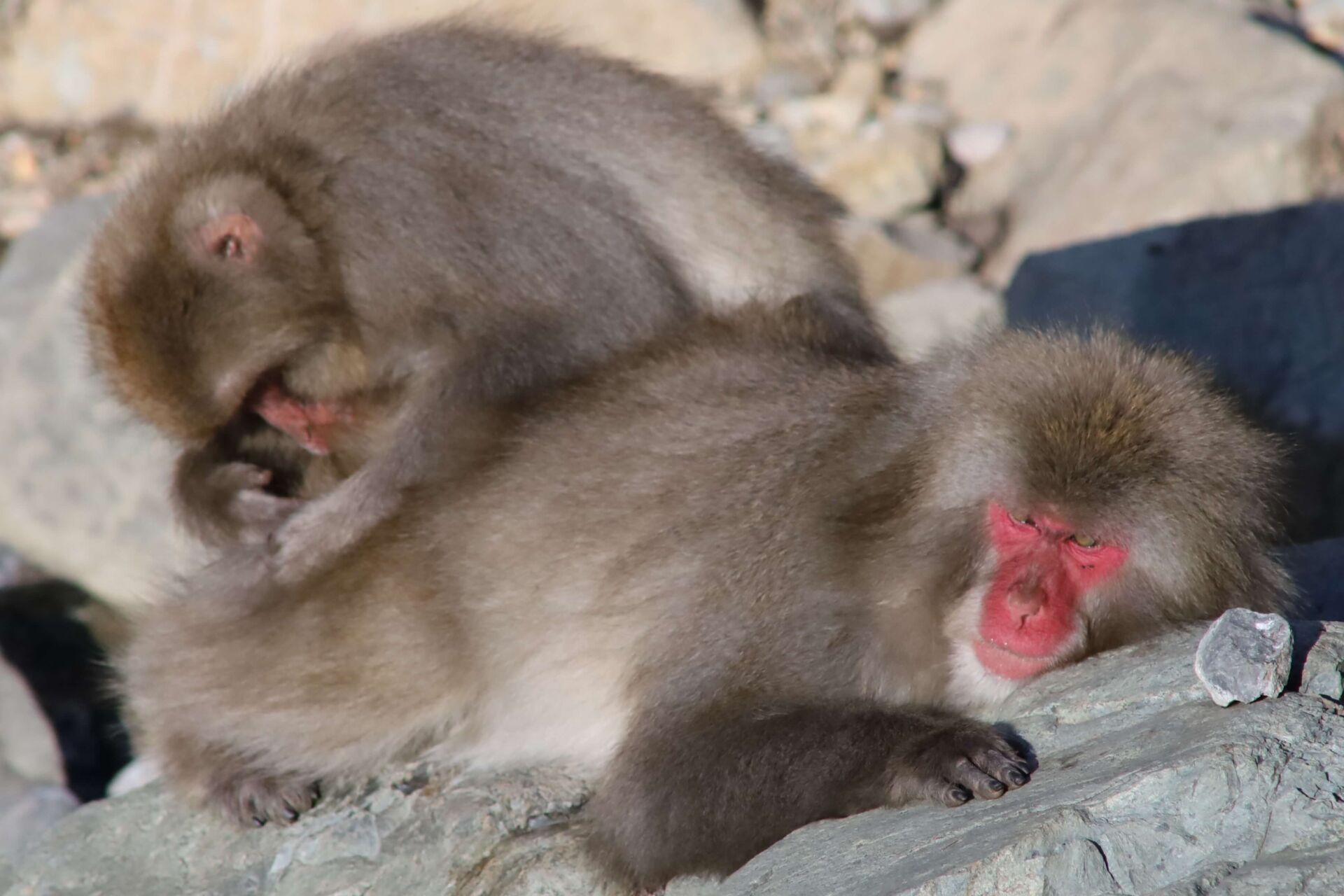
As one of Nagano's top tour operators, we are proud to provide a number of services including tours and private charters, starting from Hakuba. With so much to do in Central Japan, the easiest way to make the best of your time is to leave the planning to us!
Best Selling
1-Day Tour: Snow Monkeys, Zenkoji Temple & Sake in Nagano
- Spots:
- NaganoSnow MonkeyHakuba
- Pick-up:
- Nagano CityHakuba
- Drop-off:
- Nagano CityHakuba
Offering pick up from Hakuba, this fun and educational tour brings you to the Jigokudani Monkey Park to get up close and personal with the famous hot spring loving snow monkeys. After that, you will be treated to a tasty Japanese lunch before visiting Nagano City and the historic Zenko-ji temple, one of Japan's oldest and most important Buddhist sites.
Recommended
[START FROM HAKUBA] Private Snow Monkey Tour
- Spots:
- NaganoSnow MonkeyHakuba
- Pick-up:
- Hakuba
- Drop-off:
- Nagano CityHakubaNozawa OnsenShiga KogenMadaraoMyoko
For a more personalized experience, you and your group can book our private tour of the Monkey Park and Zenko-ji Temple. With a guide and vehicle set apart for the whole day to tend to only your group, you can go at your own pace and have the guide's undivided attention. You may also store any luggage you have in the vehicle throughout the day, taking the hassle out of getting around. This is also a great way to transport your group and your luggage back to Nagano Station at the end of your trip!

Beyond just tours, we also offer private charters using our fleet of clean and modern vehicles. With door-to-door service, we can pick up you up from where you are and take you to where you want to go anywhere in Central Japan and neighboring regions.
For guests wanting to access Hakuba in the comfort of their own transport, we can arrange a private tour or charter customised to fit your needs, starting and ending at any destination including from/to Nagano Station and any resort or destination in the region. Our drivers and vehicles are fully certified, allowing us to transport you to and from your preferred destinations in combination with any activity that suits your schedule.
Got a question about visiting Hakuba? Contact us and let’s get planning together!














